Neutrophils
Cytocentrifugation may make granules in neutrophils appear larger which may be confused for eosinophils. However, they will not have the refractile quality seen in eosinophils or the vibrant reddish-orange coloring.
Large numbers of neutrophils may indicate bacterial infection. In CSF, it is indicative of bacterial meningitis.
More Images
Lymphocytes
Cytocentrifugation may make lymphocytes appear larger which can be mistaken for blasts if not careful.
Increased numbers of lymphs in CSF are indicative of viral meningitis.
More Images
Monocytes / Macrophages
May appear as typical monocyte or as macrophage with vacuoles.
See More
Typical
More Images


Erythrophage
Macrophage with engulfed RBCs.
Can be seen after hemorrhage. May also just be the result of the macrophage continuing phagocytic in vitro activity after collection.

More Images
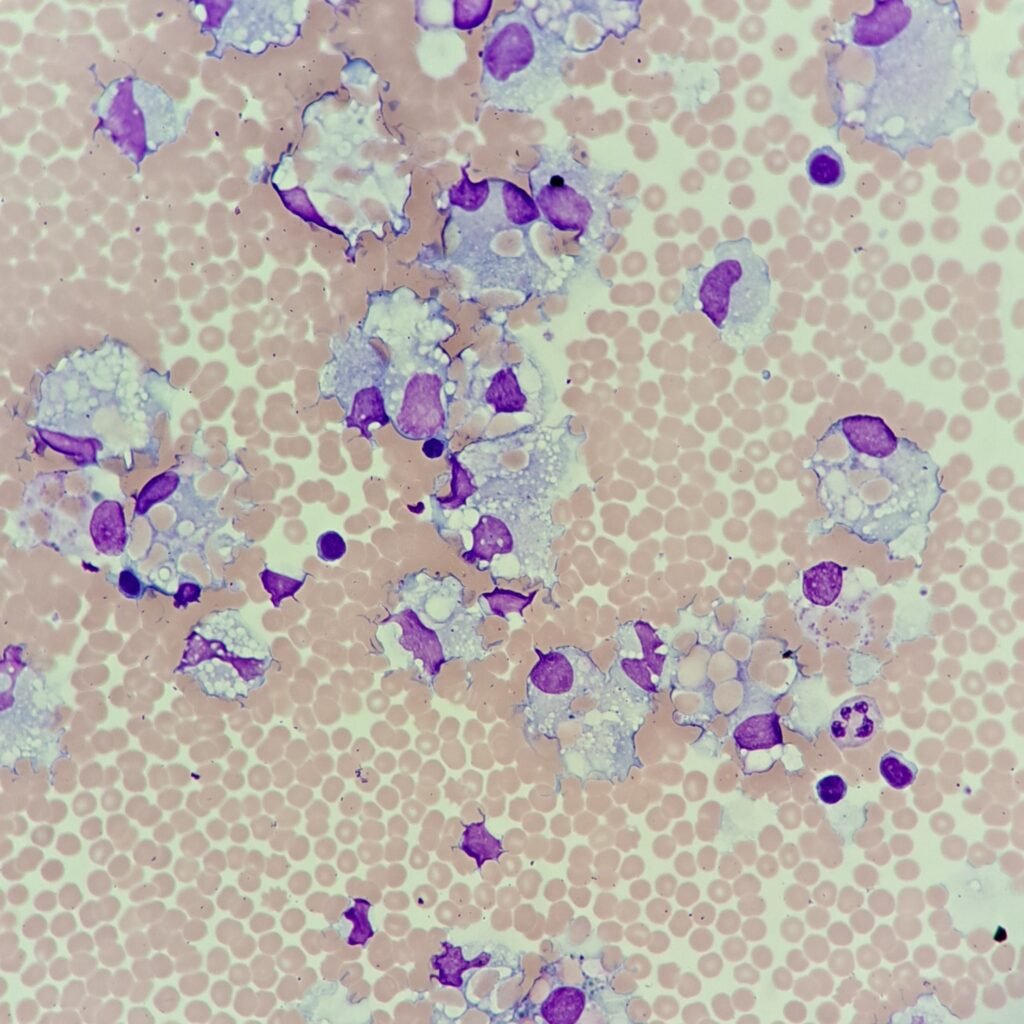
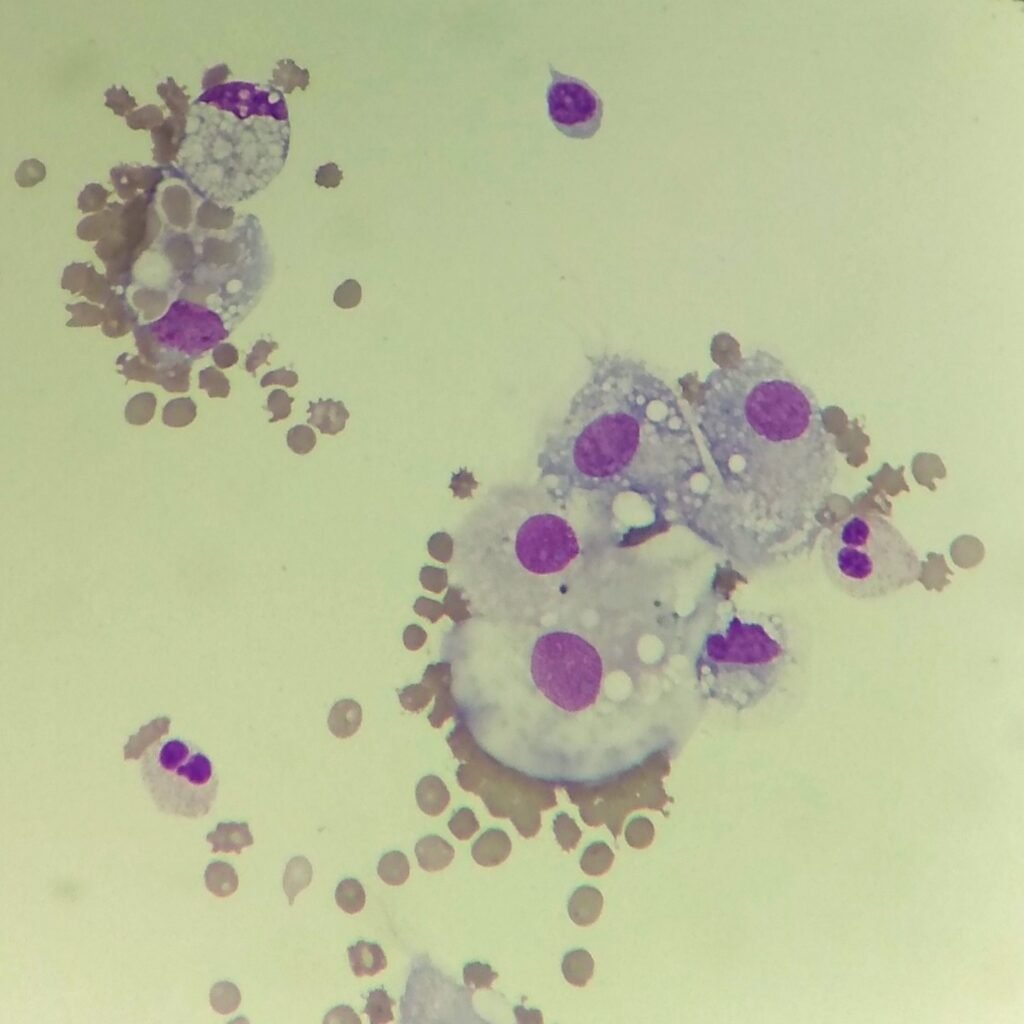
Lipophage
Macrophage with abundant lipid vacuoles. May appear in CSF following a brain infarct.
More Images
Neutrophage
Macrophage with engulfed neutrophil(s).
More Images
Siderophage
Macrophage with coarse dark blue granules .
Can be seen even months after hemorrhage as macrophages phagocytose the hemoglobin remains of RBCs.
May also be seen in disorders where there is excessive iron buildup.
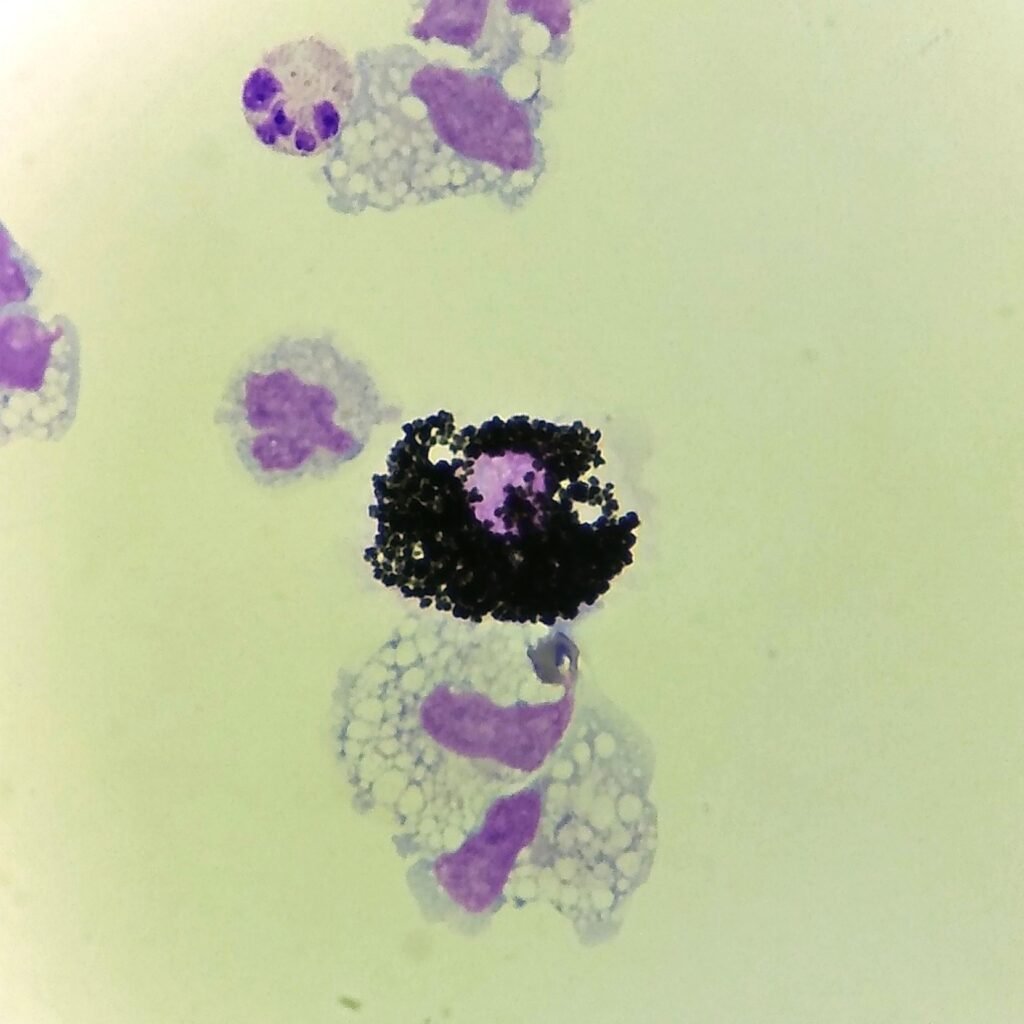
More Images
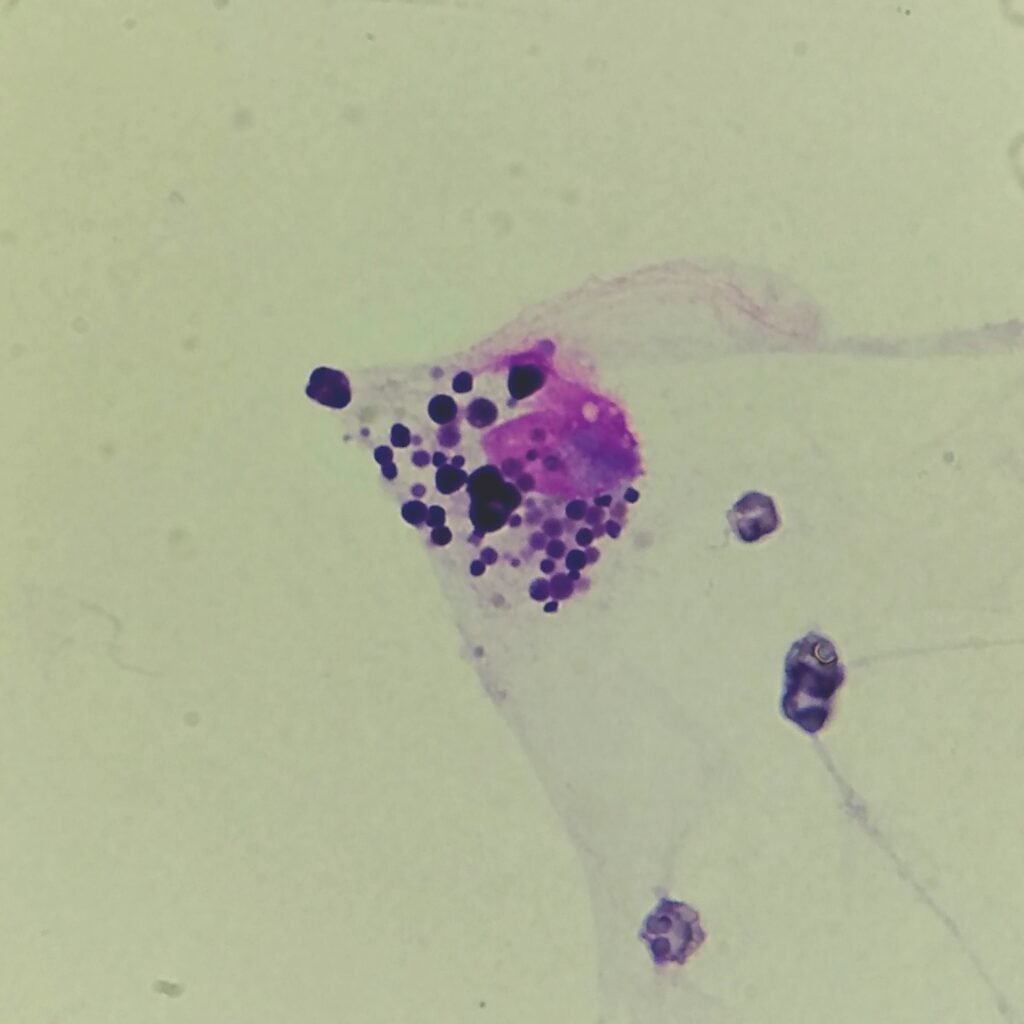

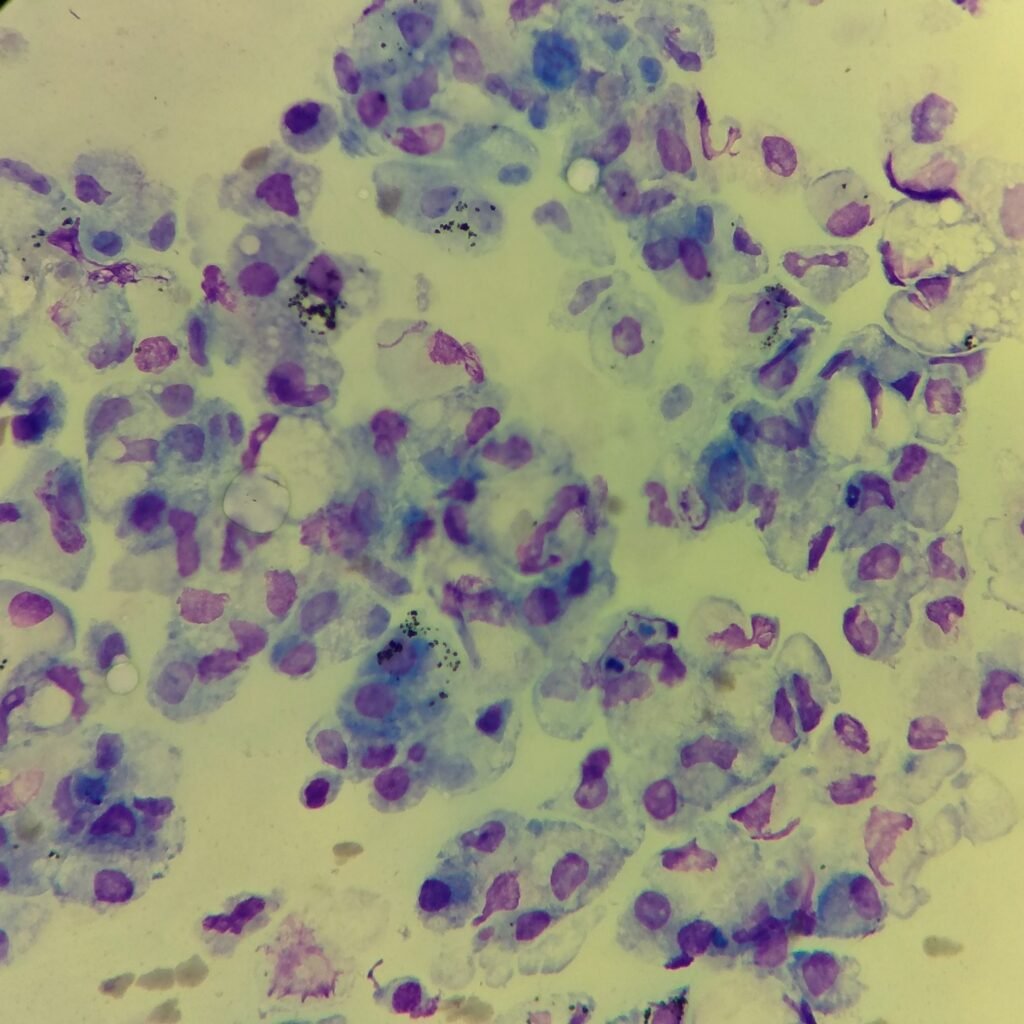
Signet Ring-Like
Macrophage has the appearance of a “signet ring” with several vacuoles forming what looks like the finger hole of a ring. The nucleus is pushed to one side of the cell, giving its distinctive appearance. Note that this type of macrophage is different from a true signet ring cell.
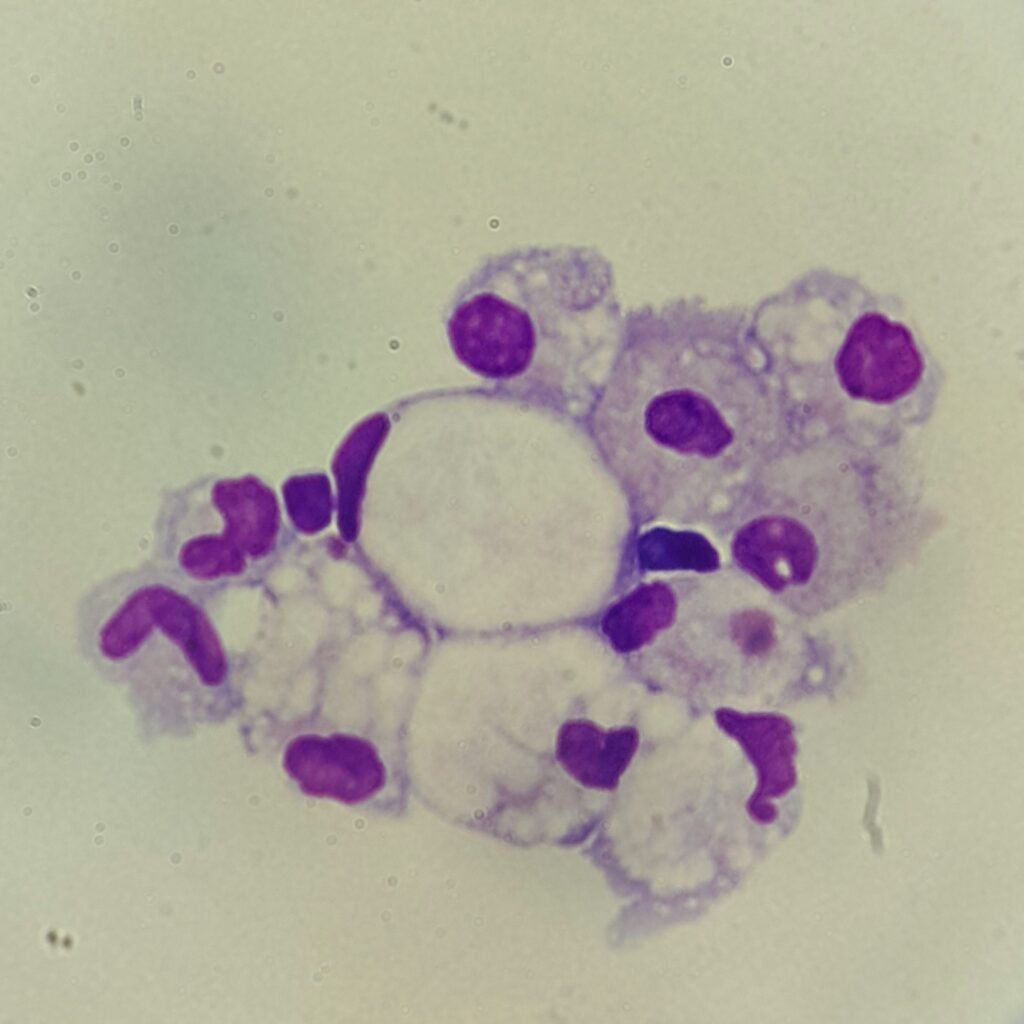
More Images
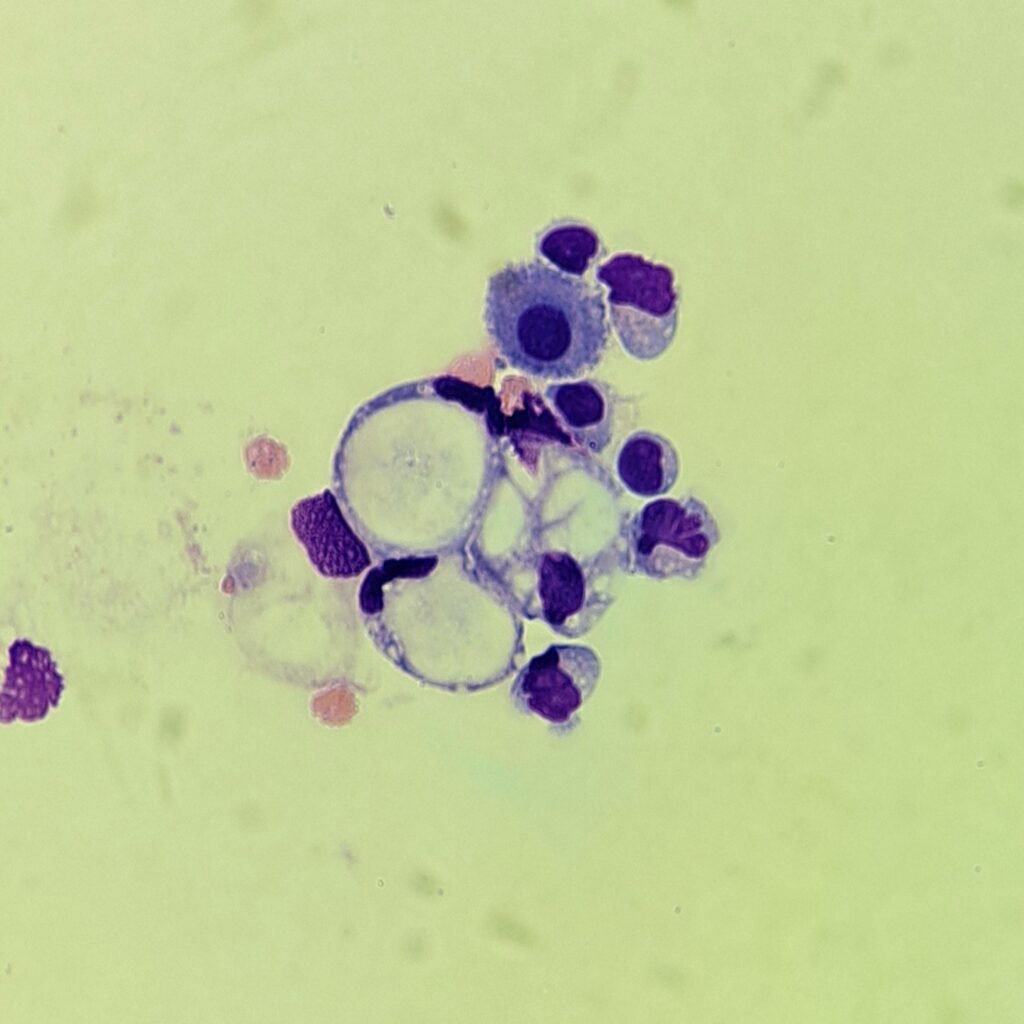
Eosinophils
Cells have coarse refractile reddish-orange granules.
Increased amounts may be seen with parasitic infection or foreign body reactions.
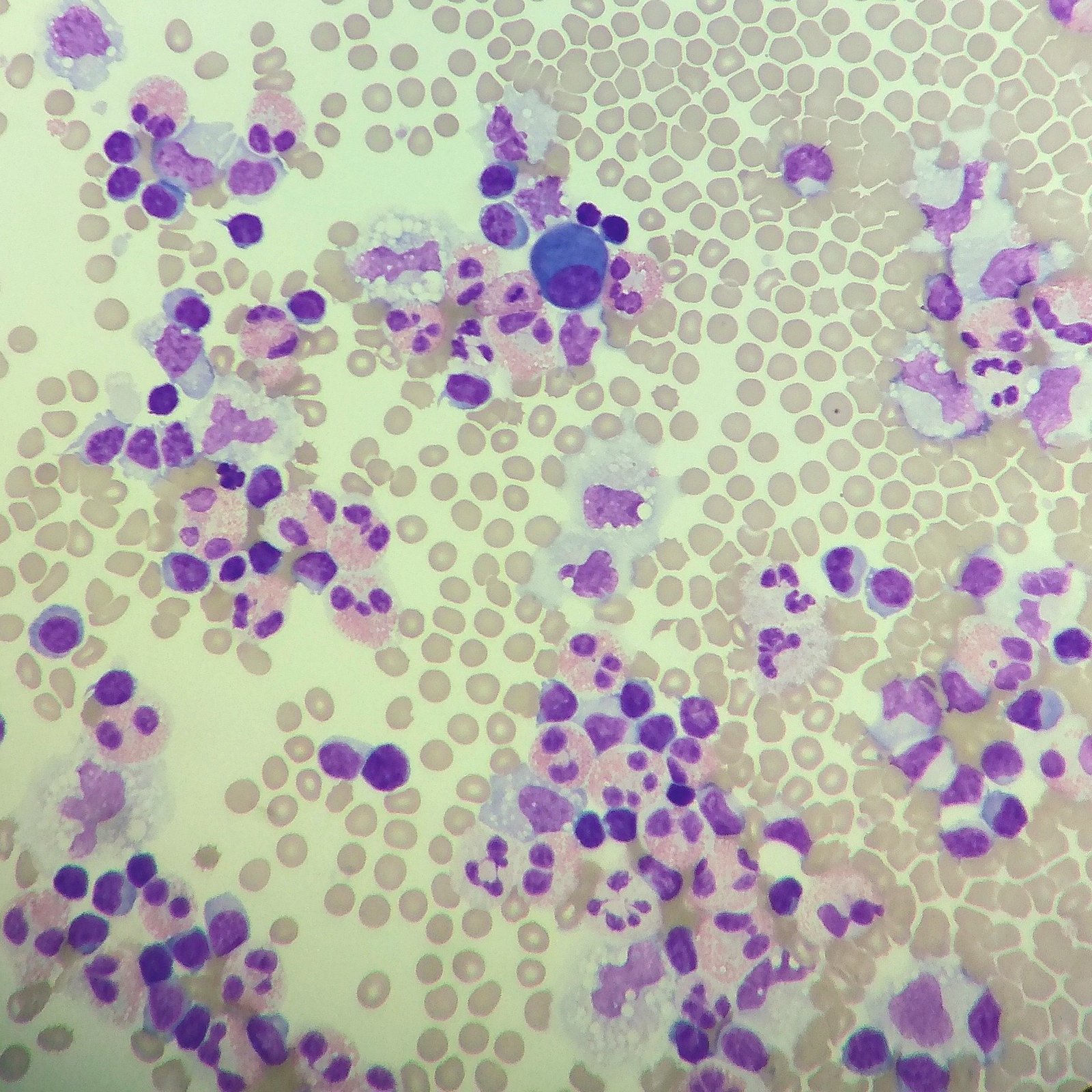
More Images
Basophils
Increased amounts may be seen with foreign body or allergic reactions.
More Images
Mast Cells
Larger and more granulated than a basophil but with similar function. Nucleus is round. Cytoplasm is filled with dark blue granules.
Increased amounts can be seen in Mast Cell Disease, parasitic infections, and allergic reactions.Increased amounts may be seen with foreign body or allergic reactions.

More Images

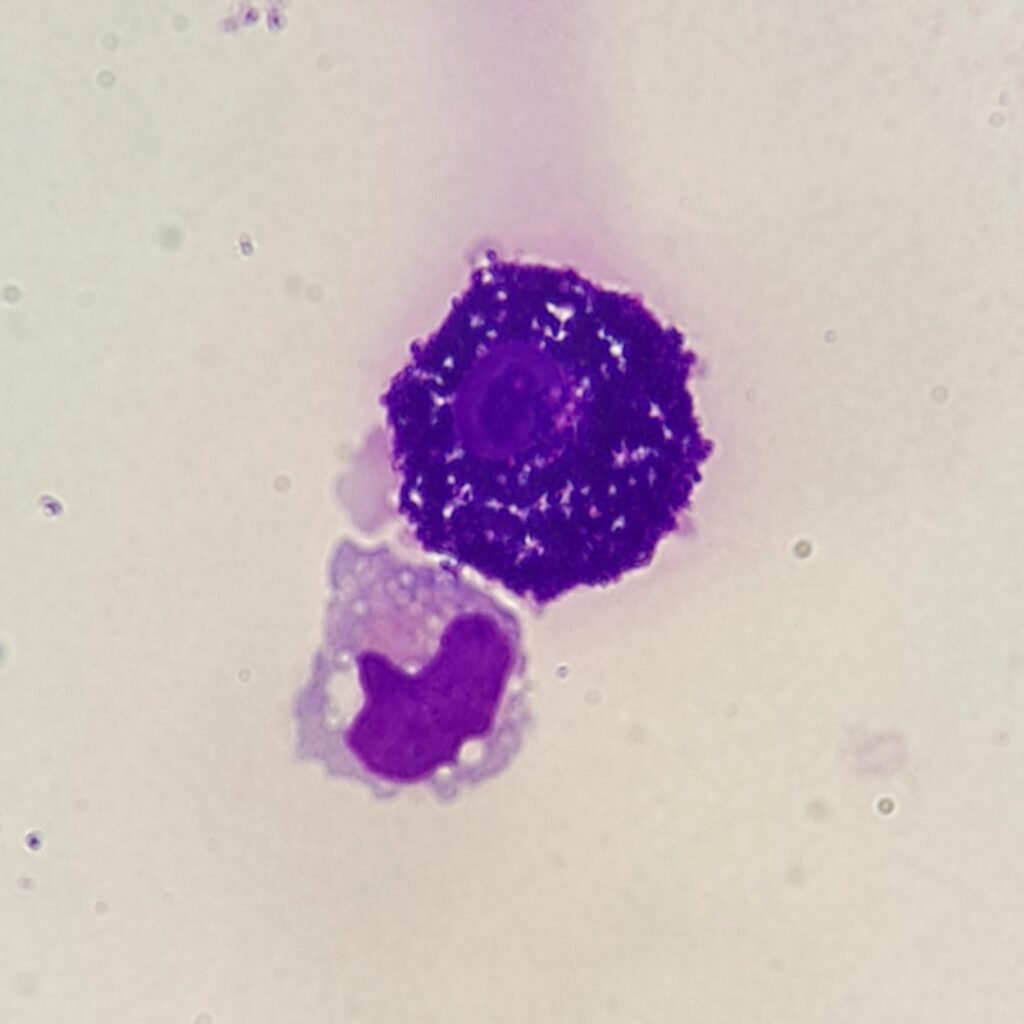
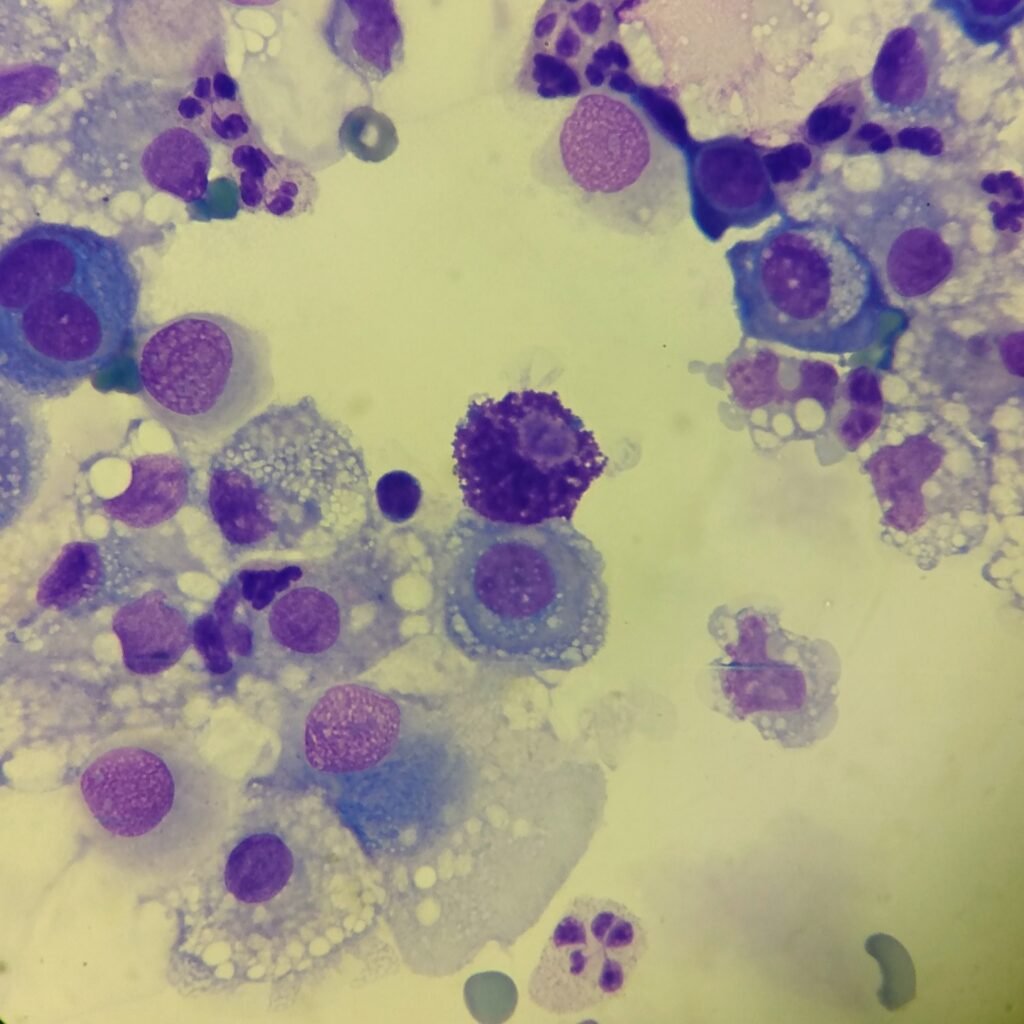
Mesothelial Cells
Lining cells seen in pleural, peritoneal, and pericardial fluids..
Described as having a “fried egg” appearance. Cells may be seen in clumps but “windows” between cells still allows for individual counting.
Cell may be multinucleated. Nucleus is round to oval with smooth borders and evenly distributed chromatin. Nucleloli are usually present.
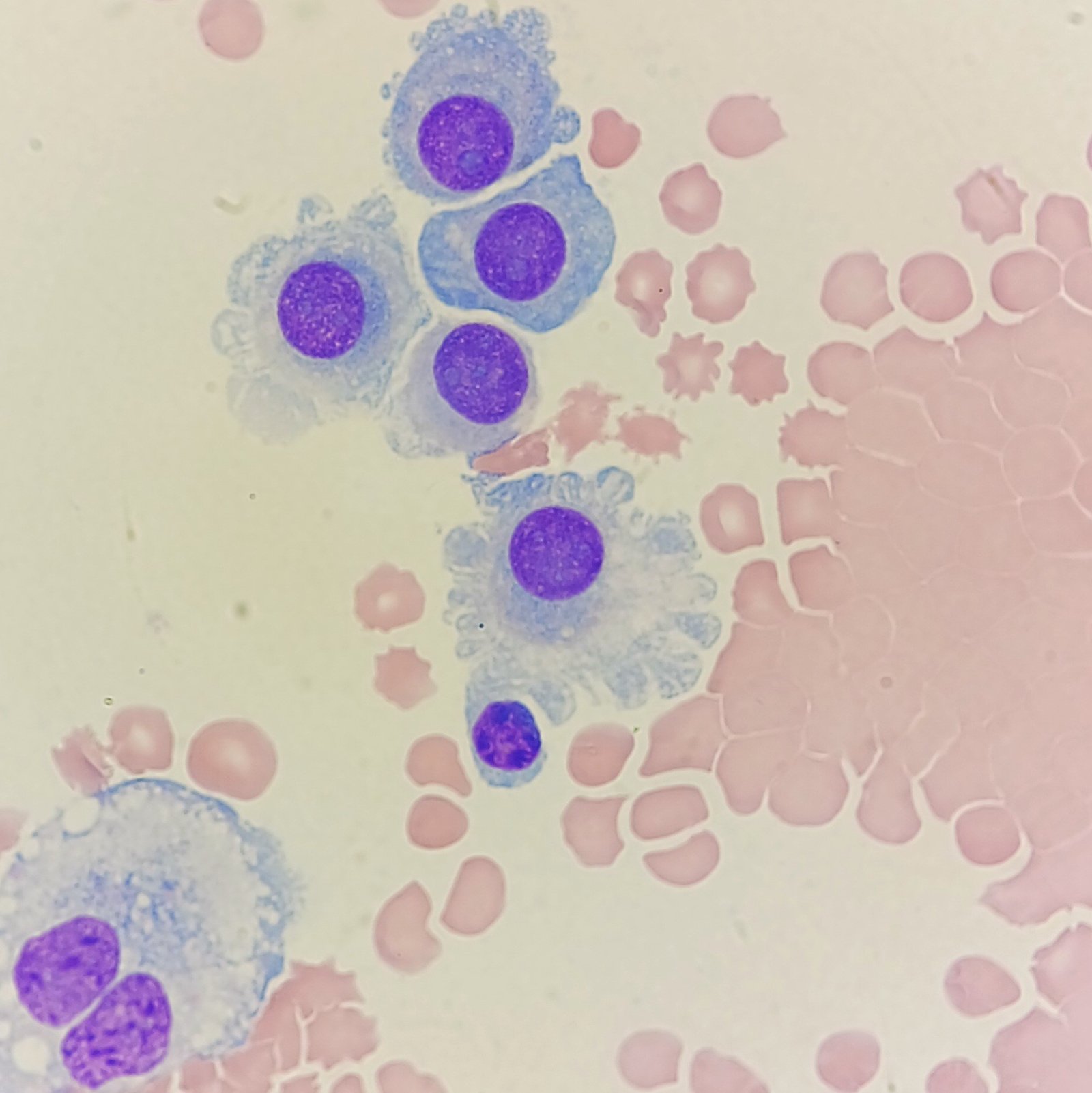
More Images
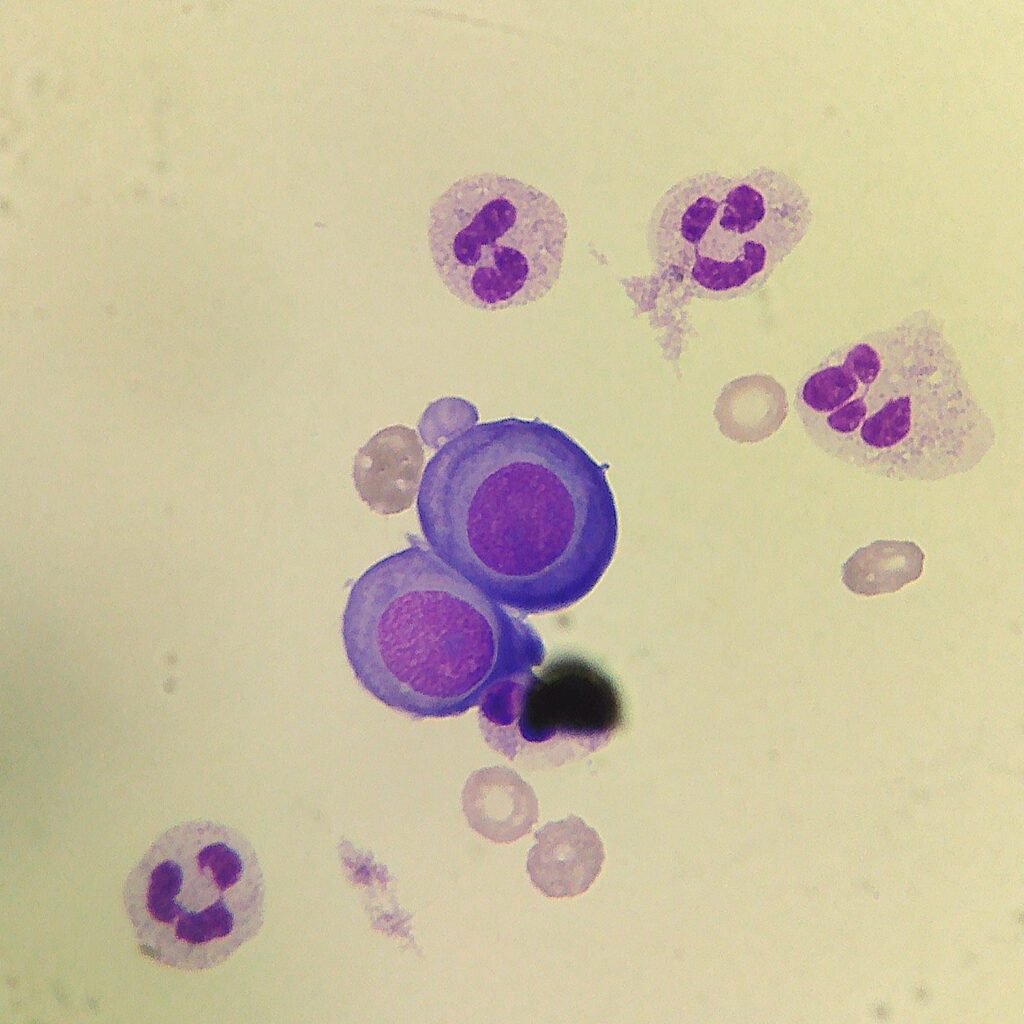
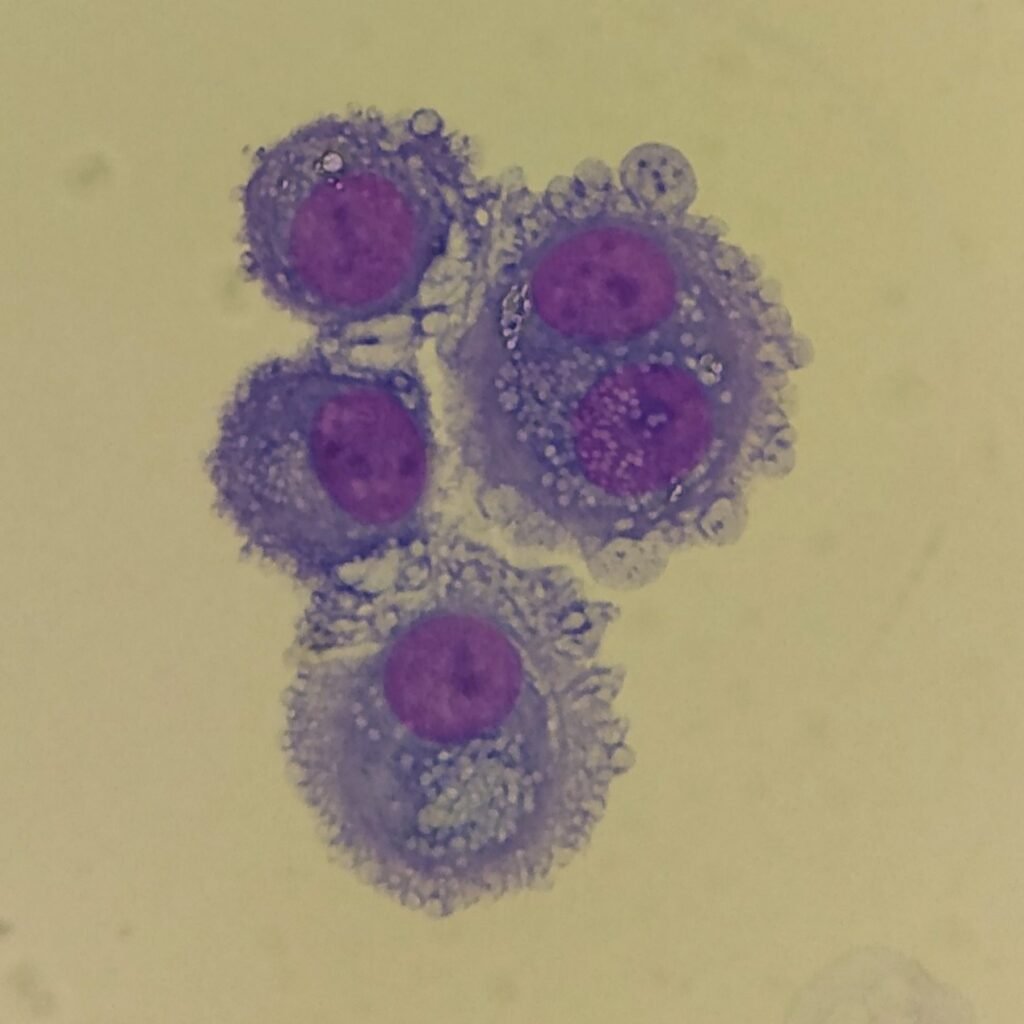
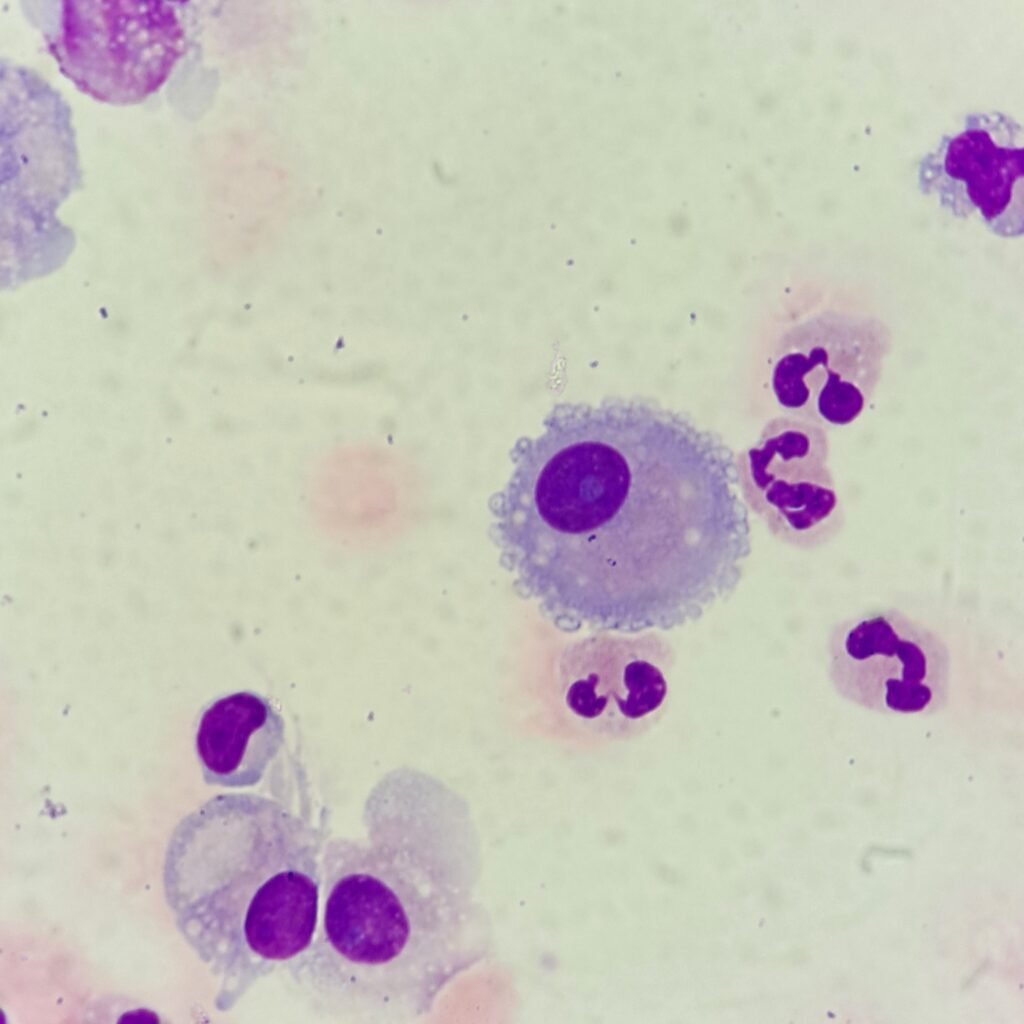
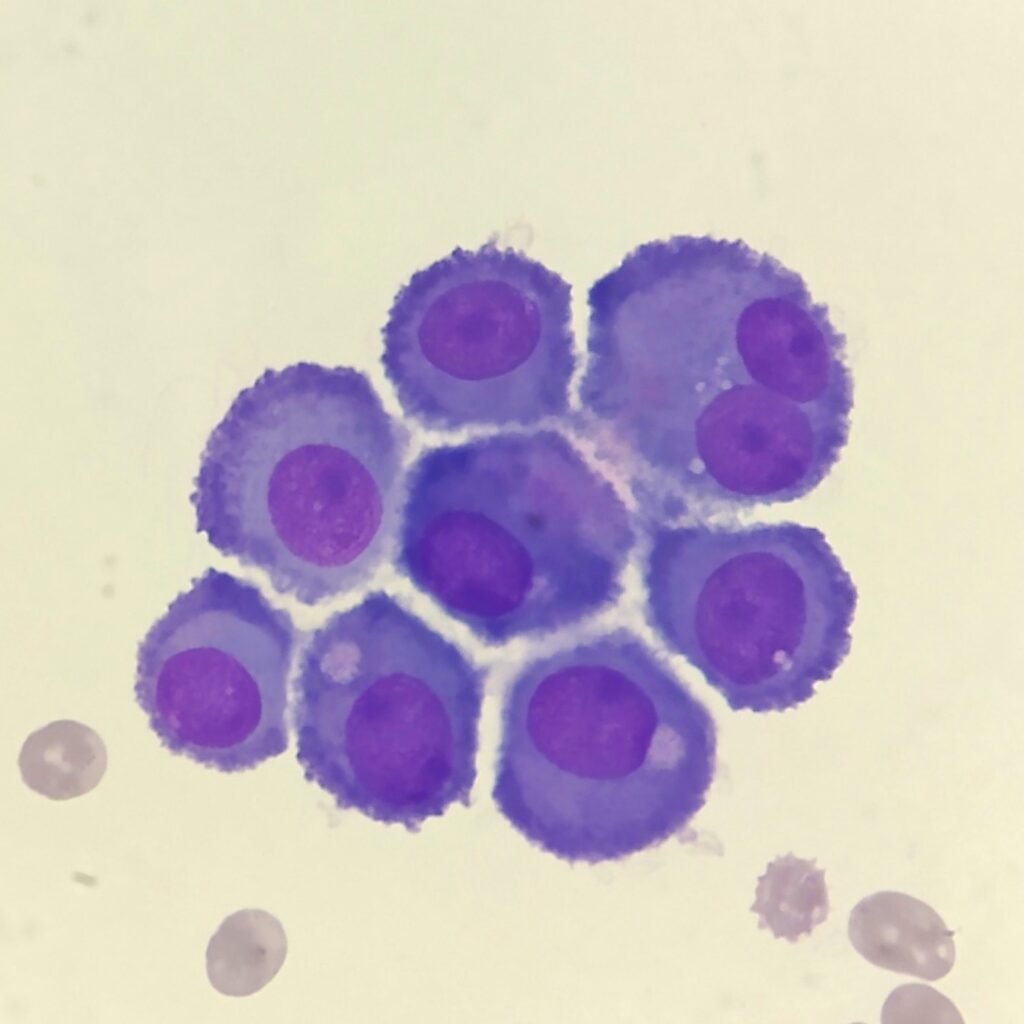
Synovial Lining Cells (Synoviocyte)
Lining cell seen in synovial fluid. Visually similar to mesothelial cell.
Nucleus is round to oval with smooth borders. Nucleoli may be present.
Cytoplasm may have irregular edges or vacuoles.
Not clinically significant.
More Images
Blast Cells
Cytocentrifugation may exaggerate cellular features, such as larger nucleoli or irregular nuclear shape.
Chromatin is fine with one or more nucleoli.
More Images
Mitotic Figures
Chromosomal structures are visible in the nucleus, which can cause a daisy-like appearance.

More Images
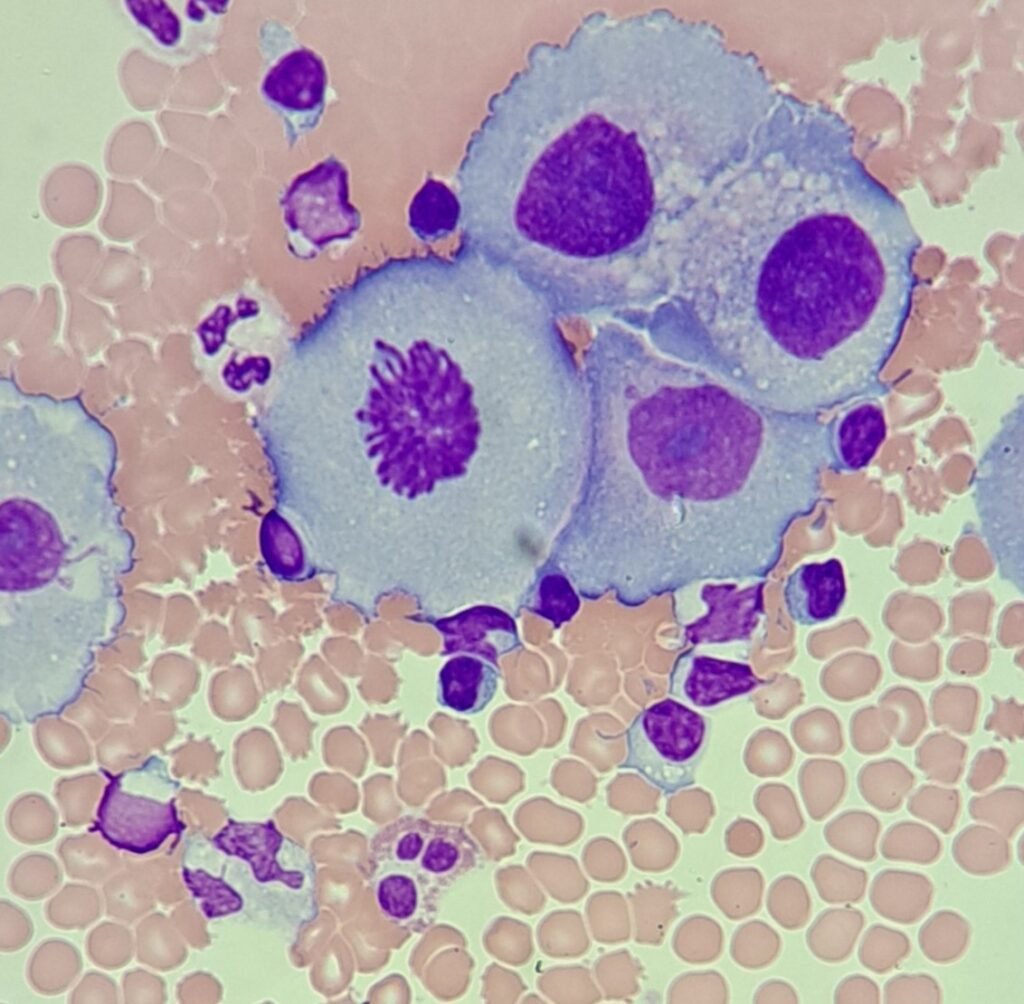
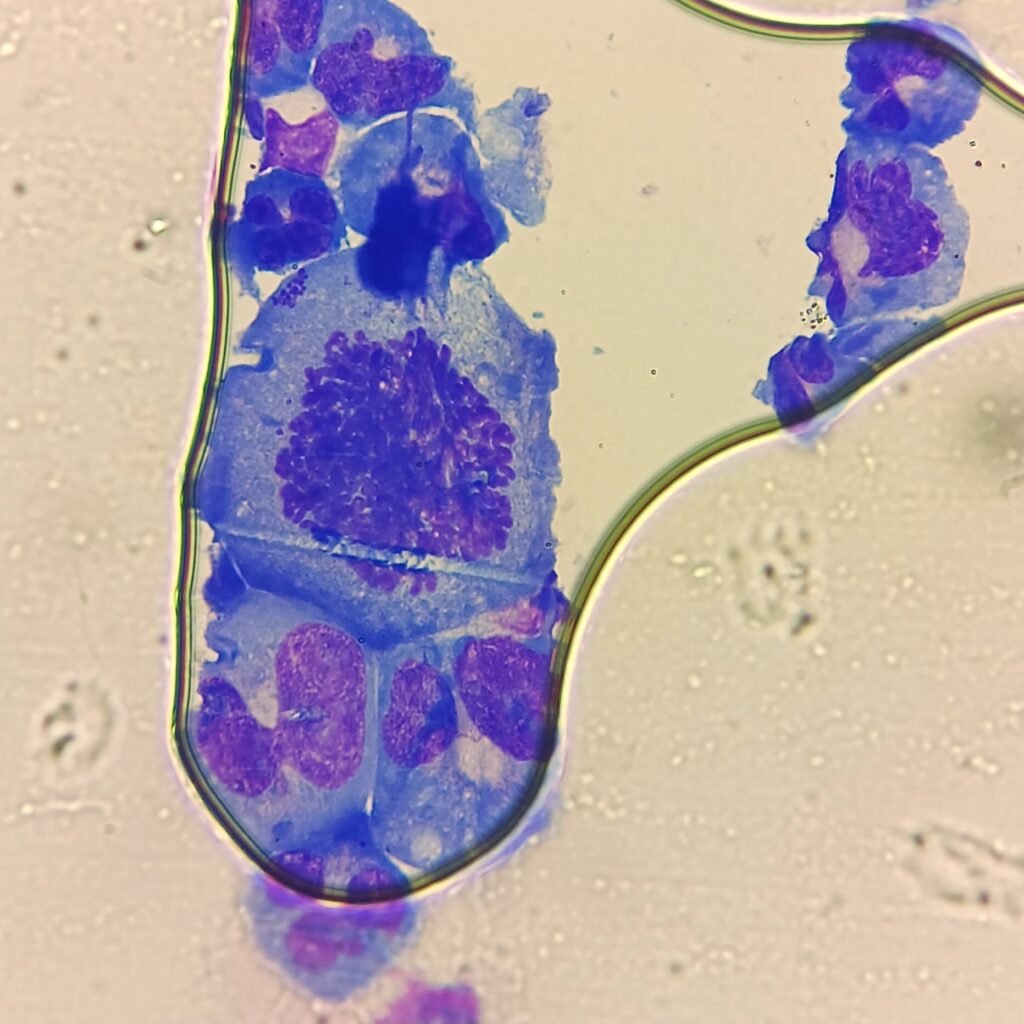
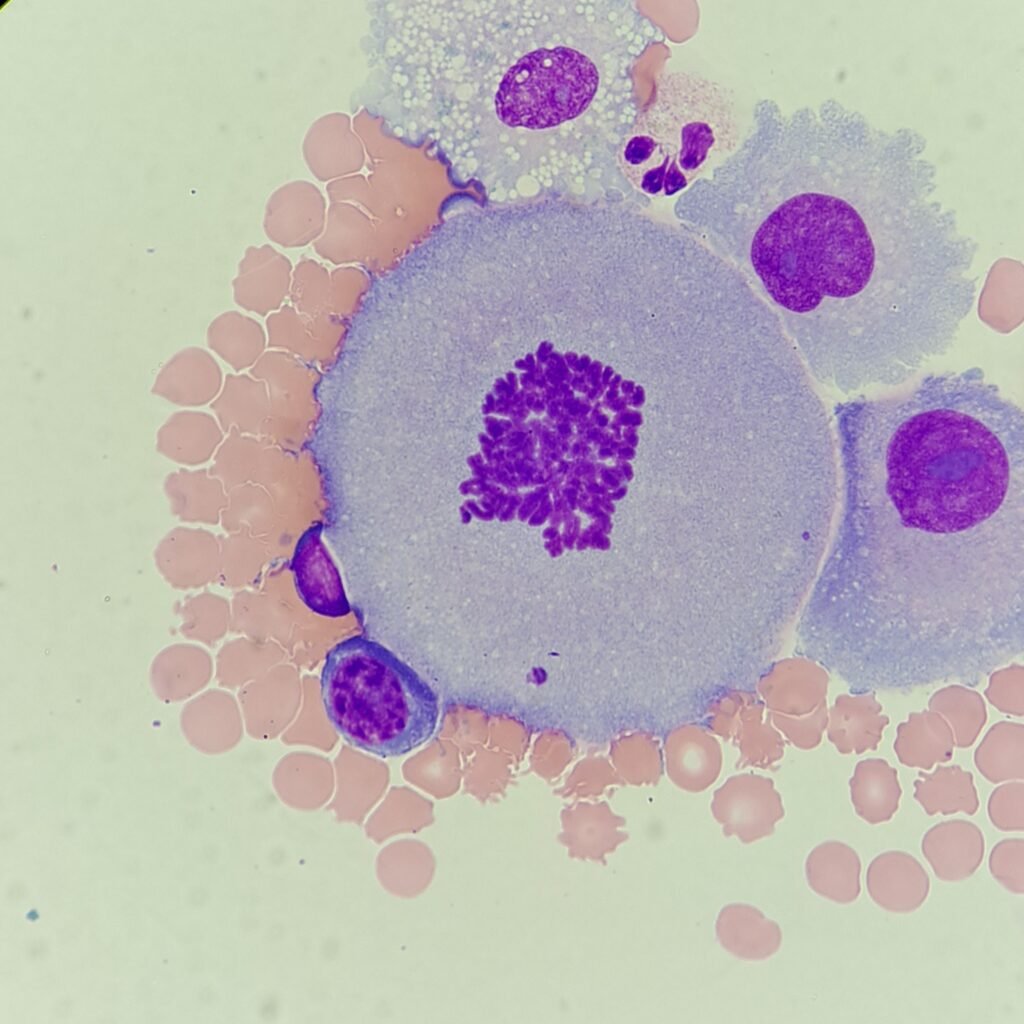
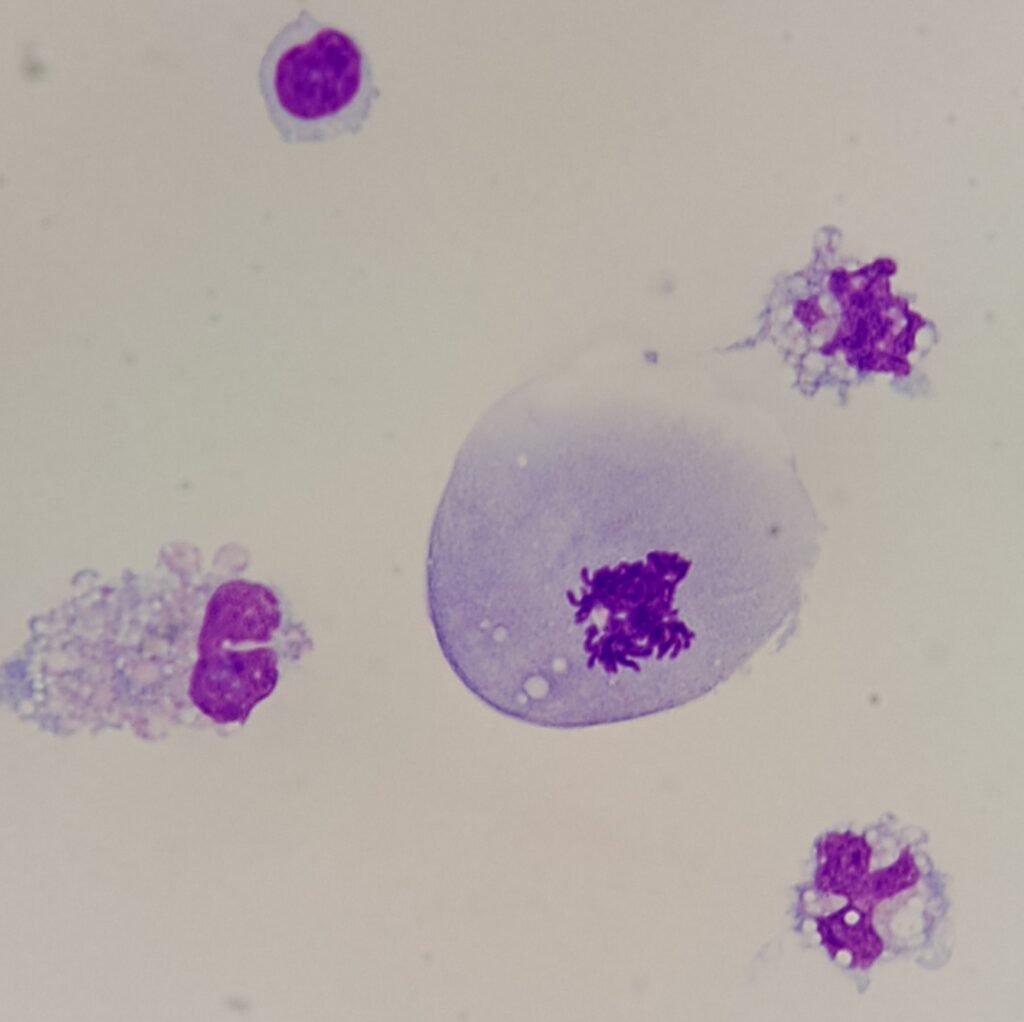

Malignant Cells
Appearance of malignant cells can vary widely. However, they commonly have one or more of the following features: Cells clumping together with no discernable borders between or one giant cell with many nuclei, Dark-staining, 3-D appearance, irregular nulei or chromatin pattern, etc.
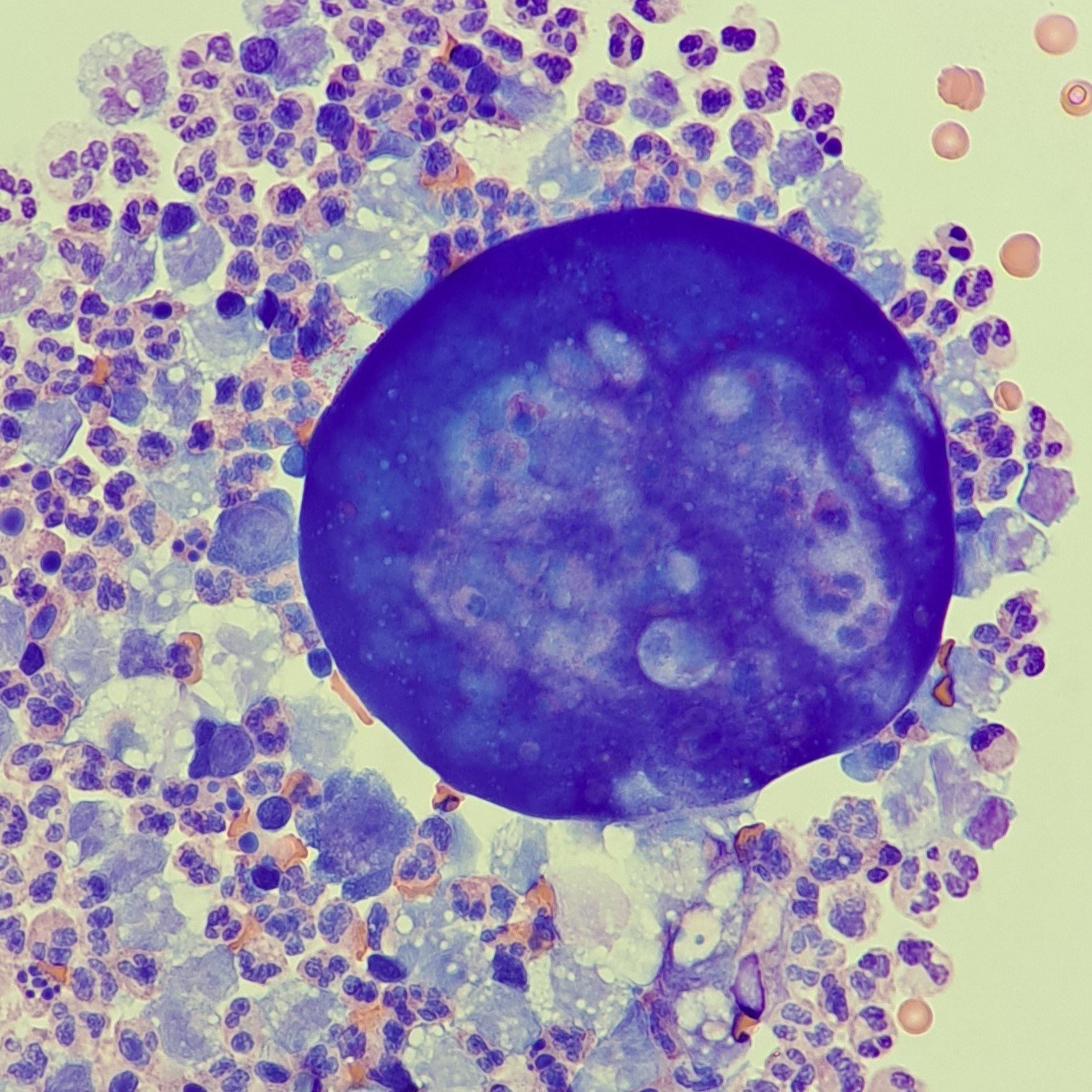
More Images
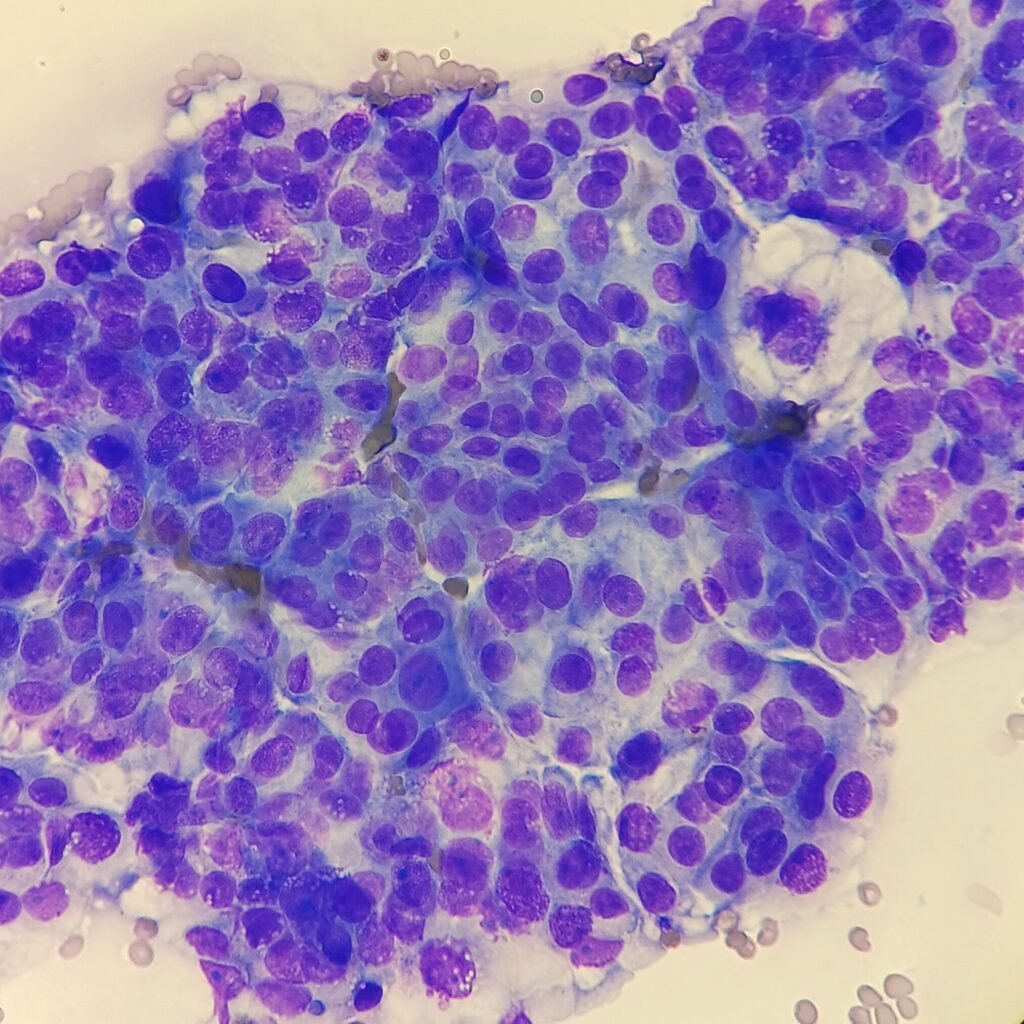
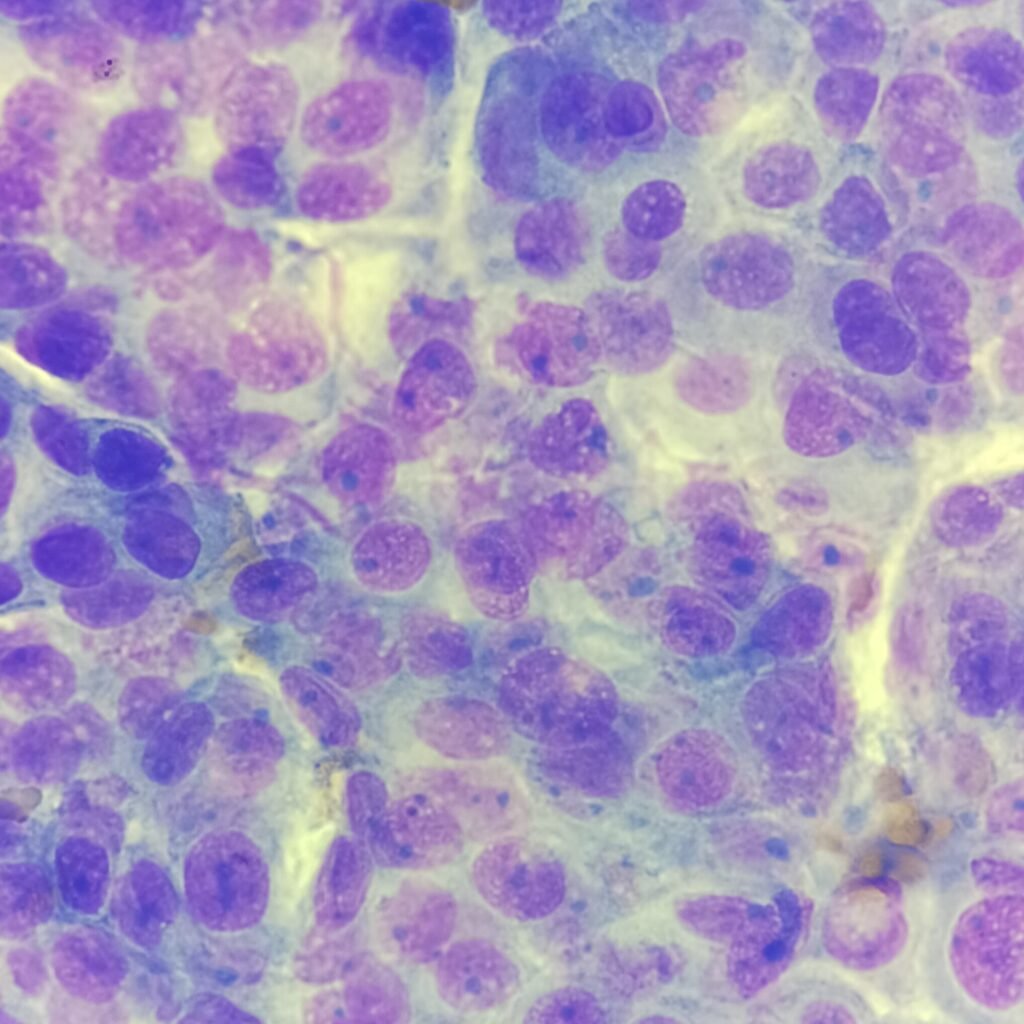
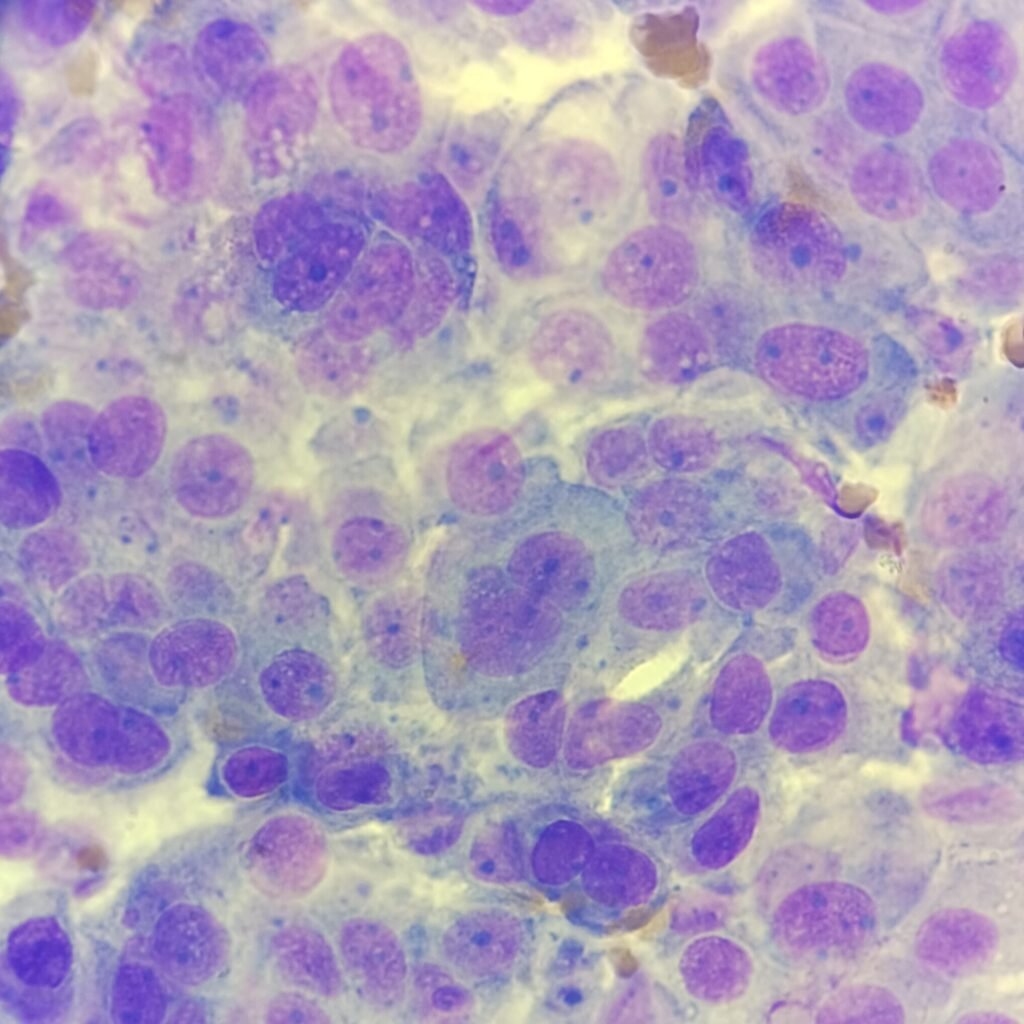
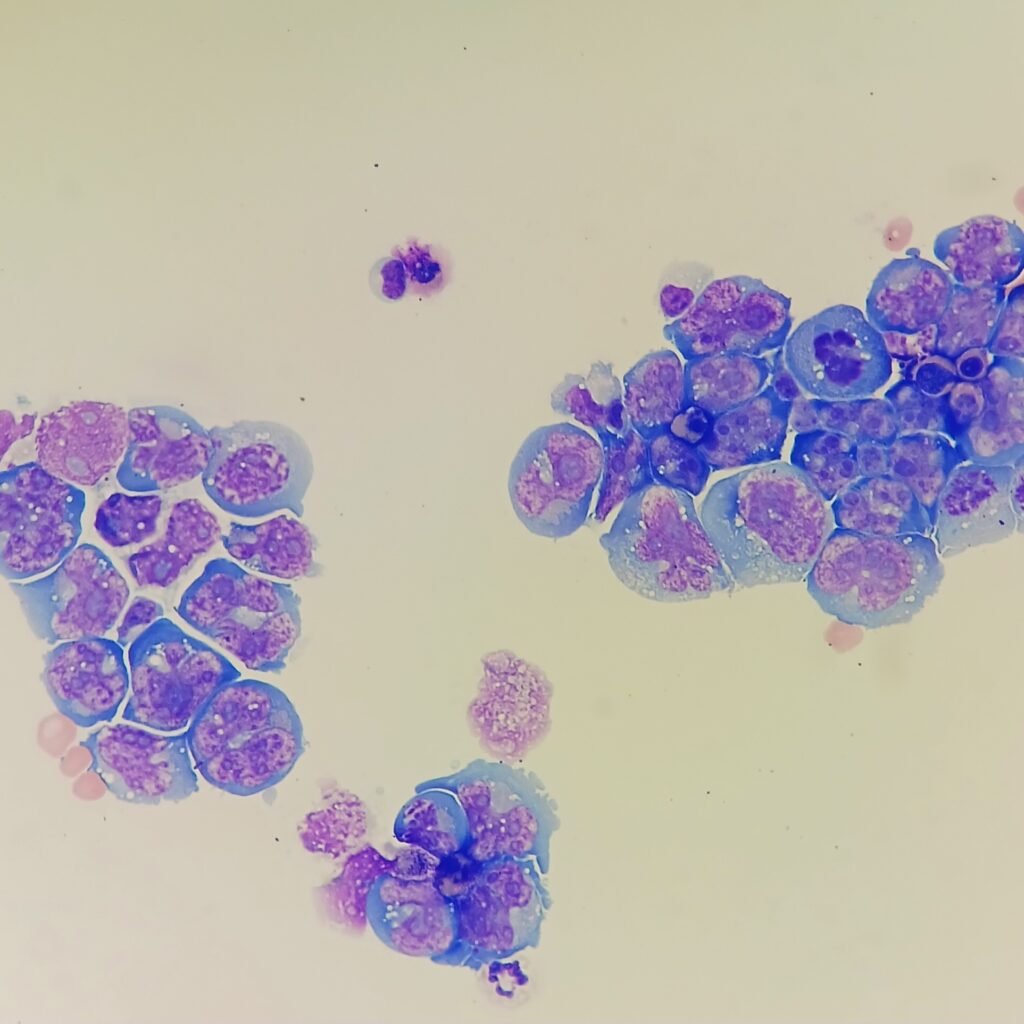
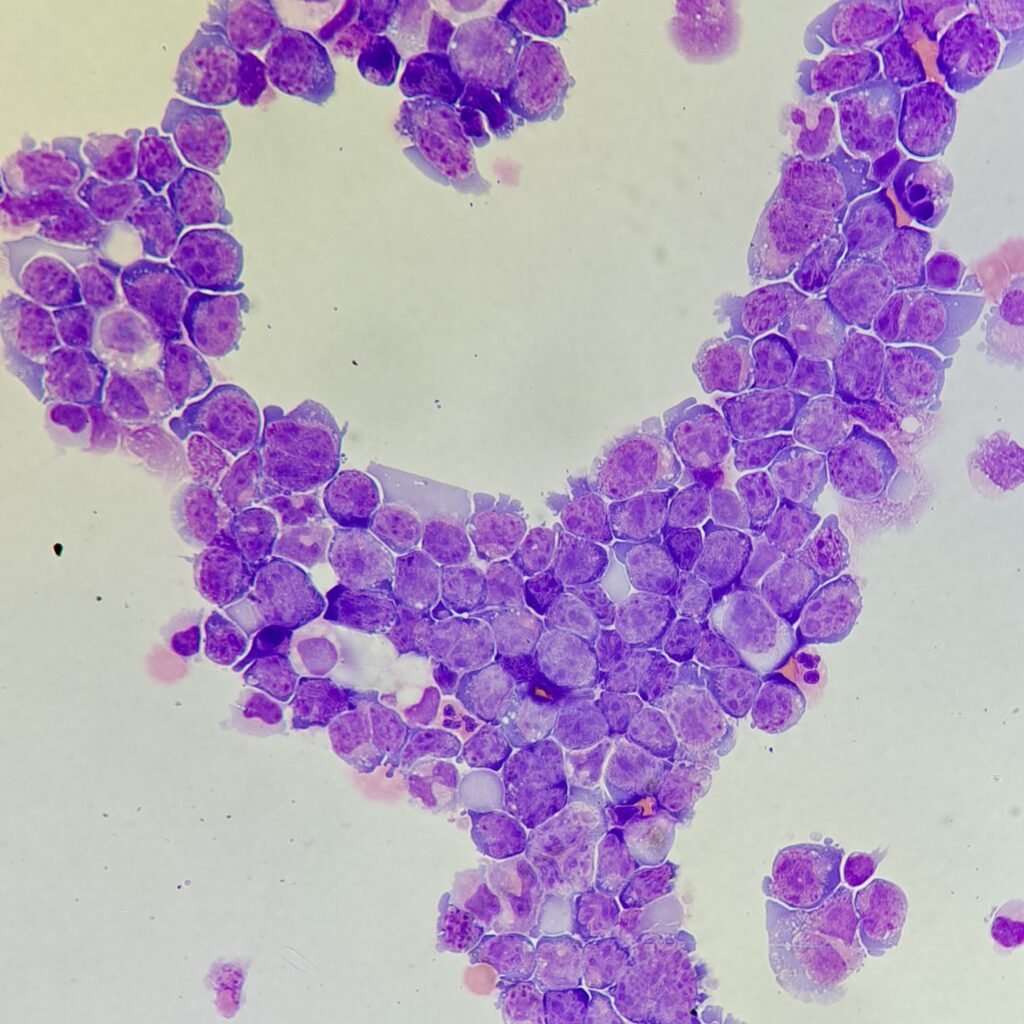
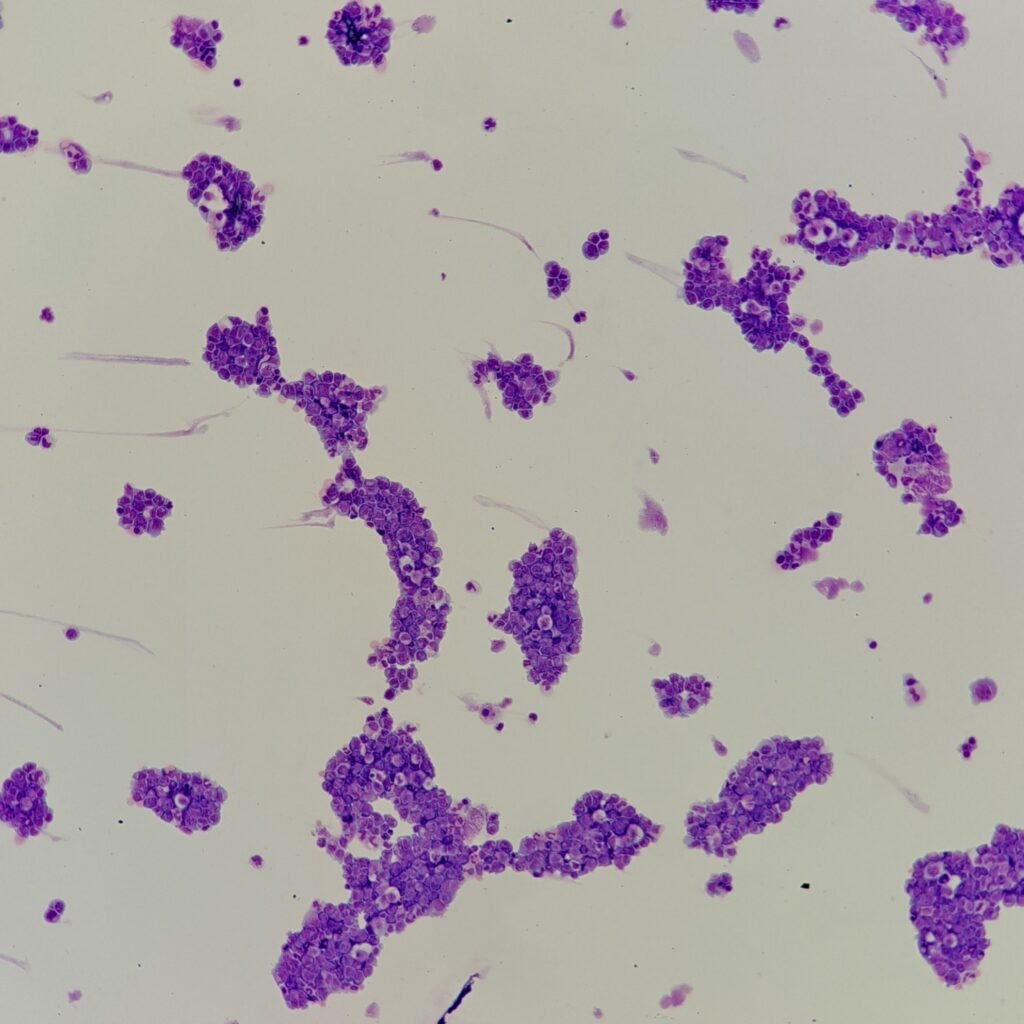
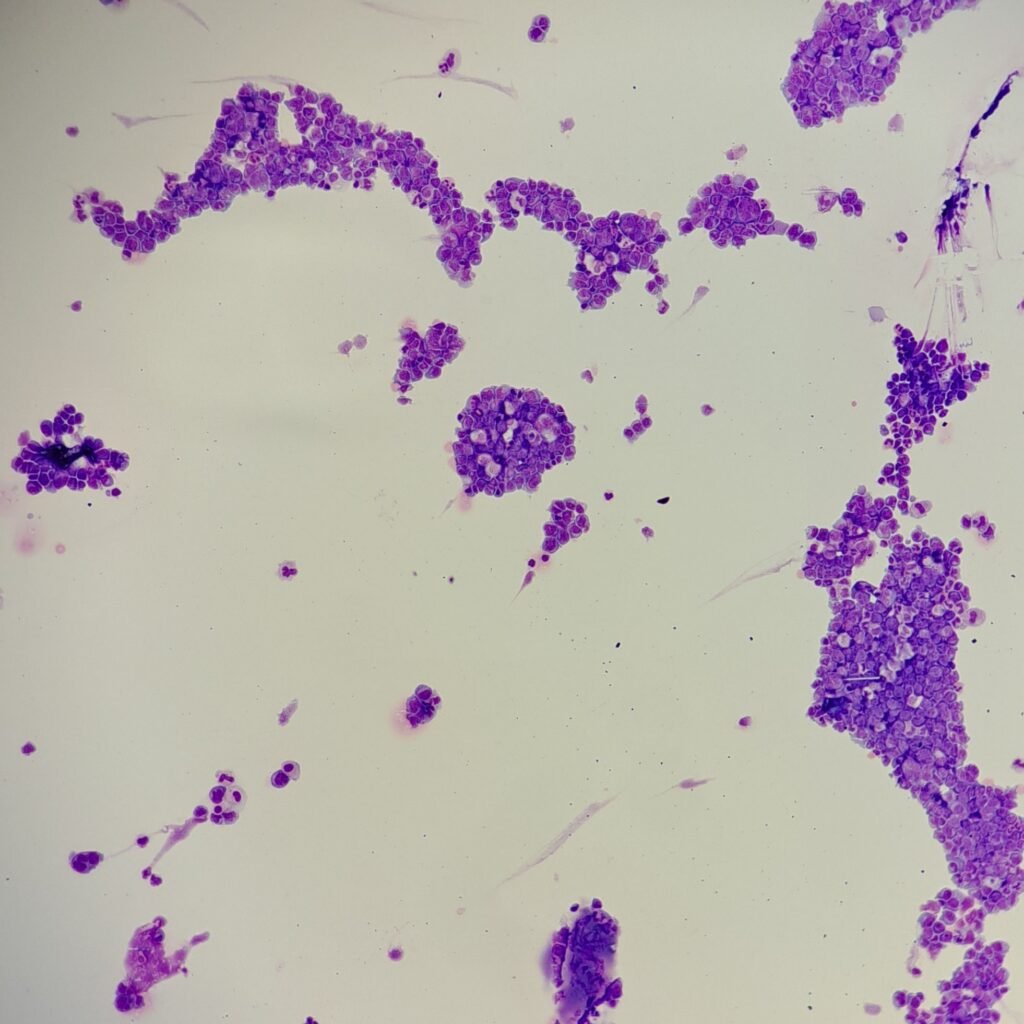
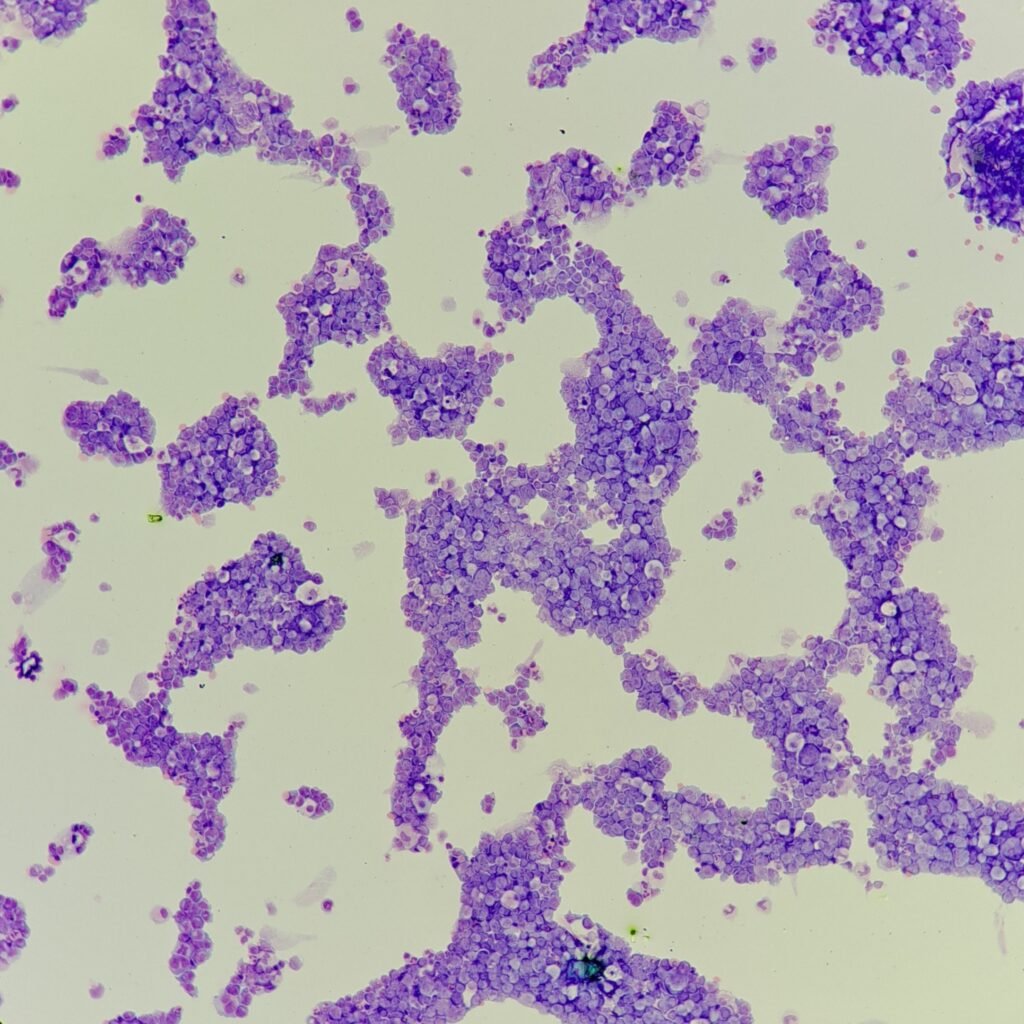
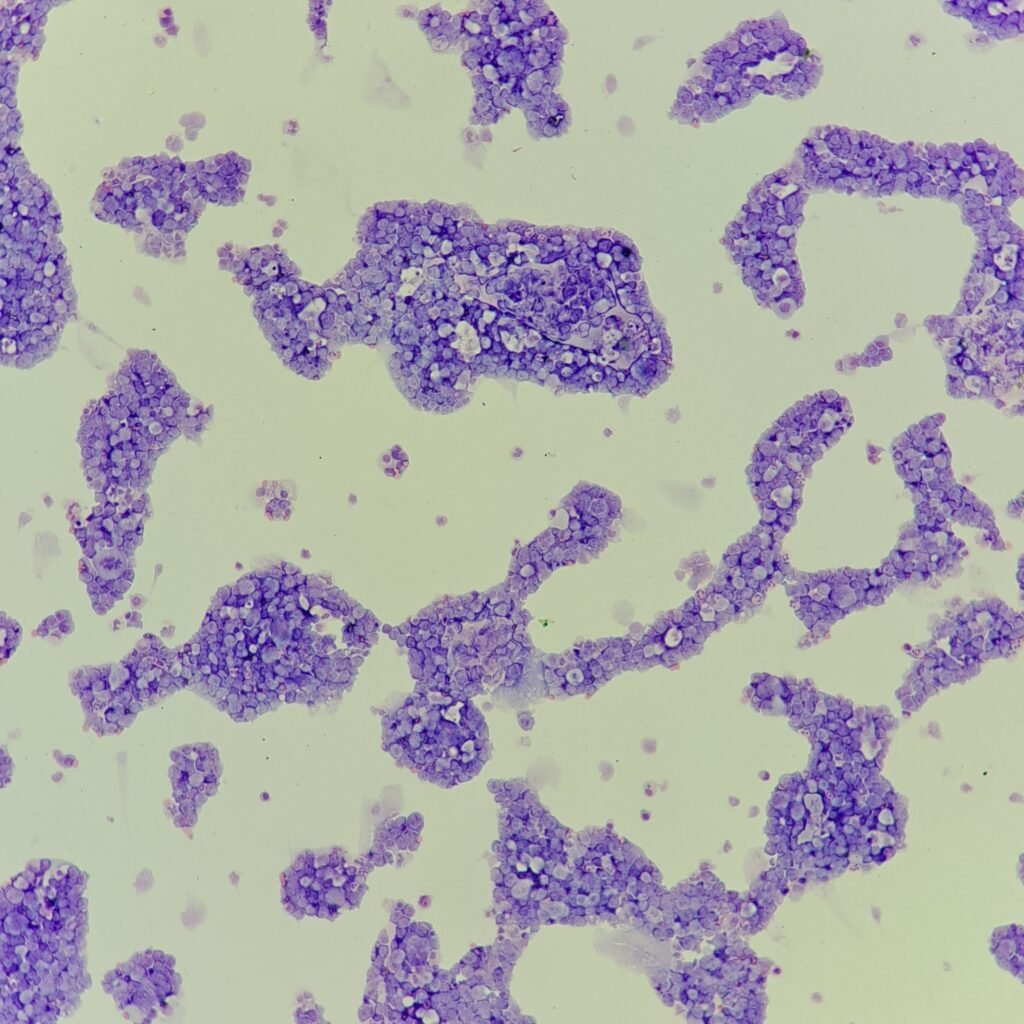
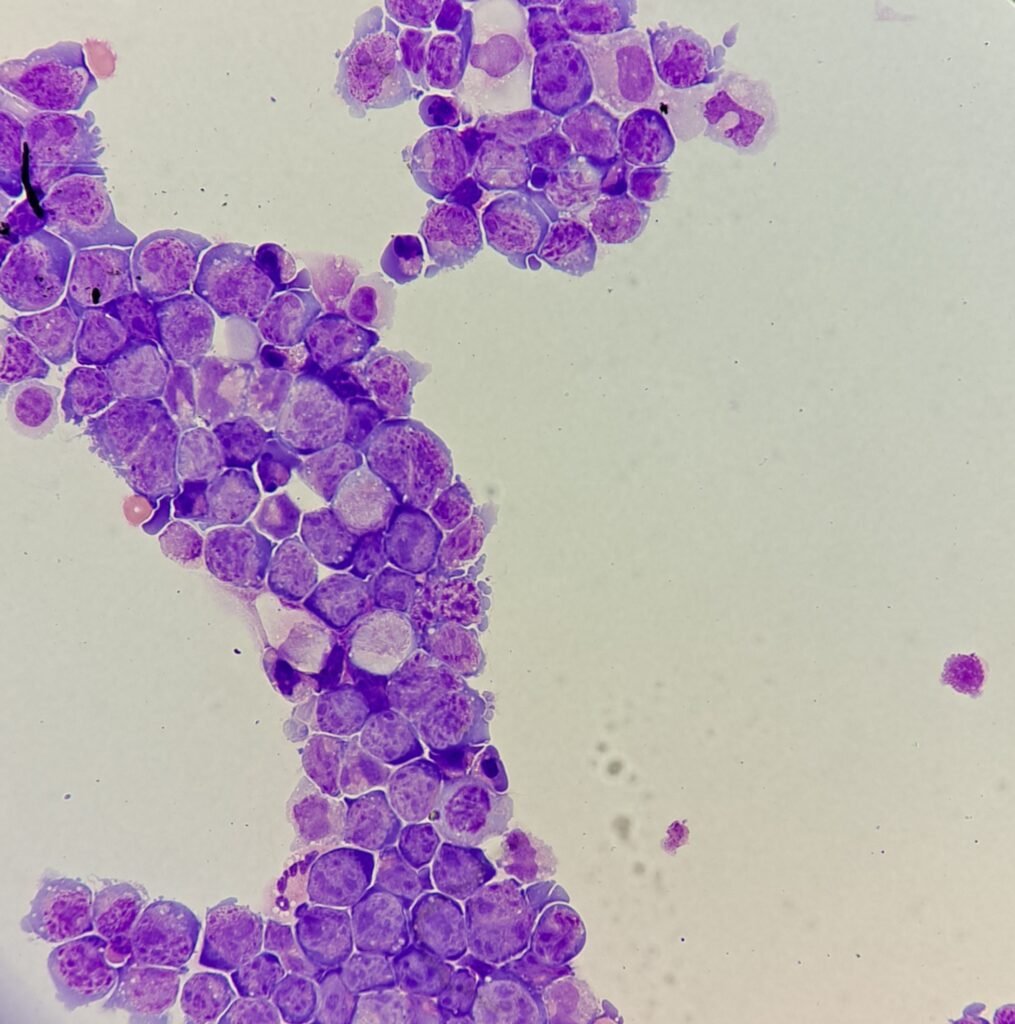
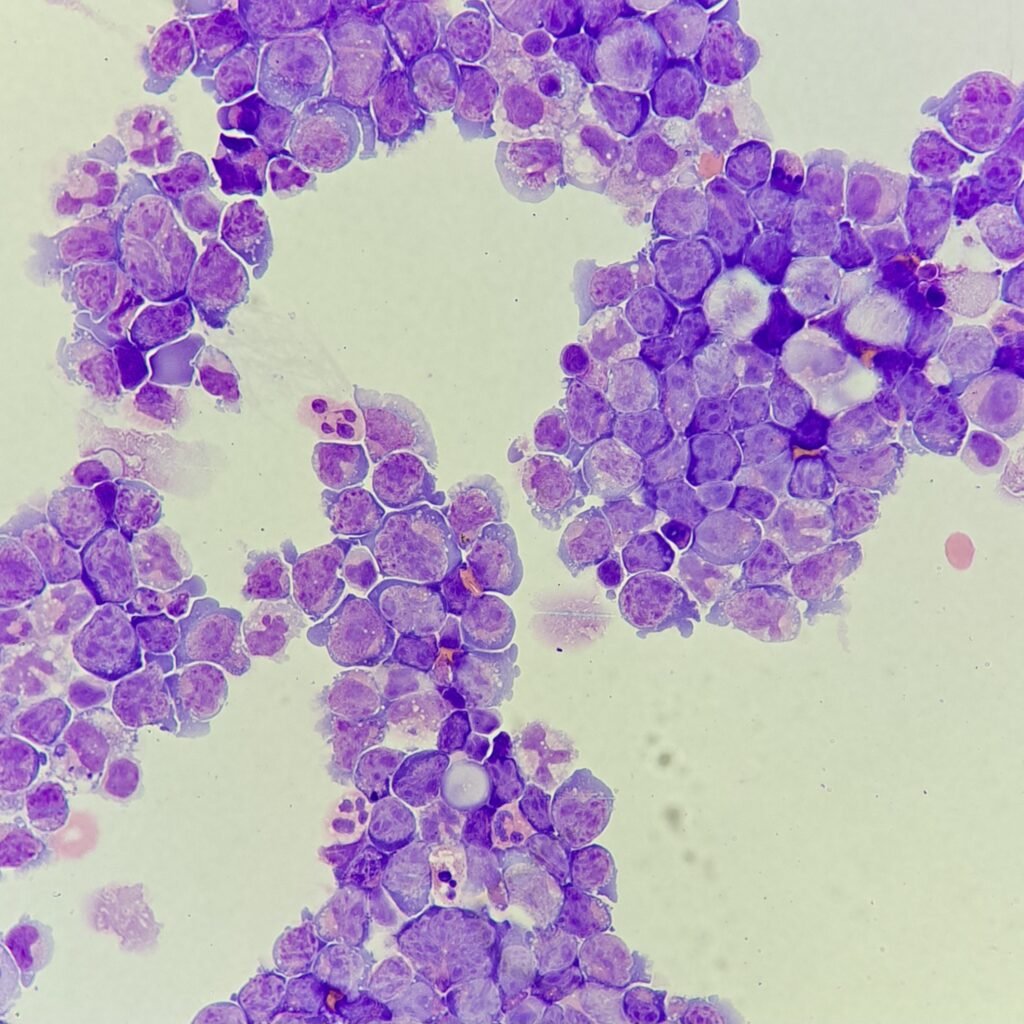
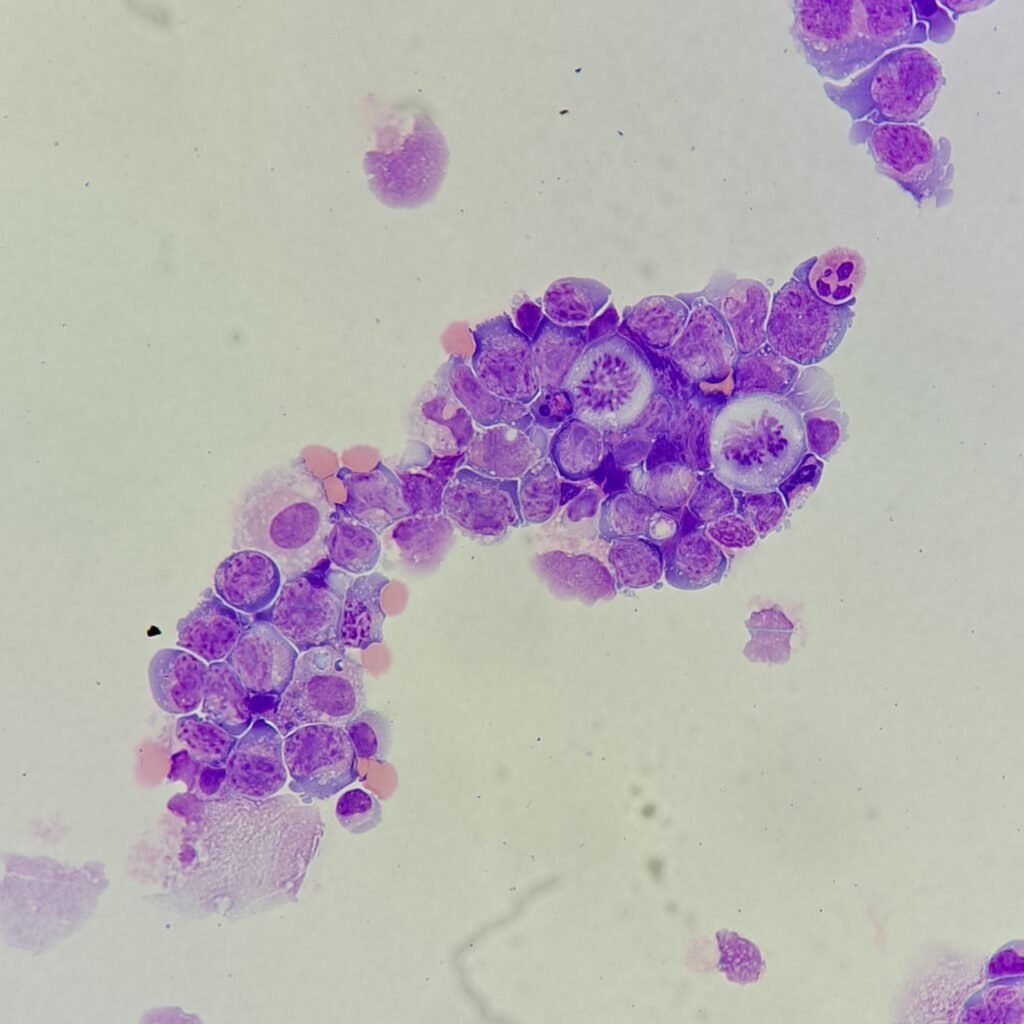
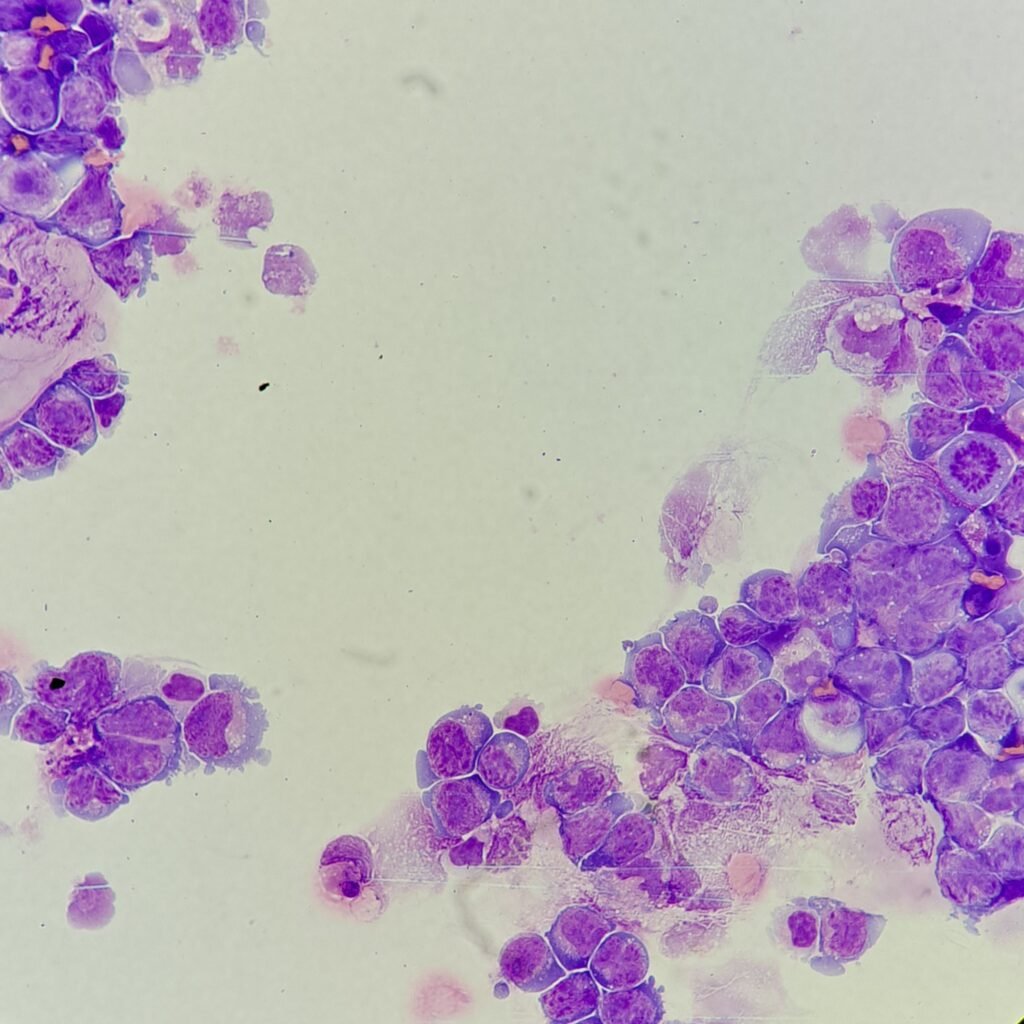
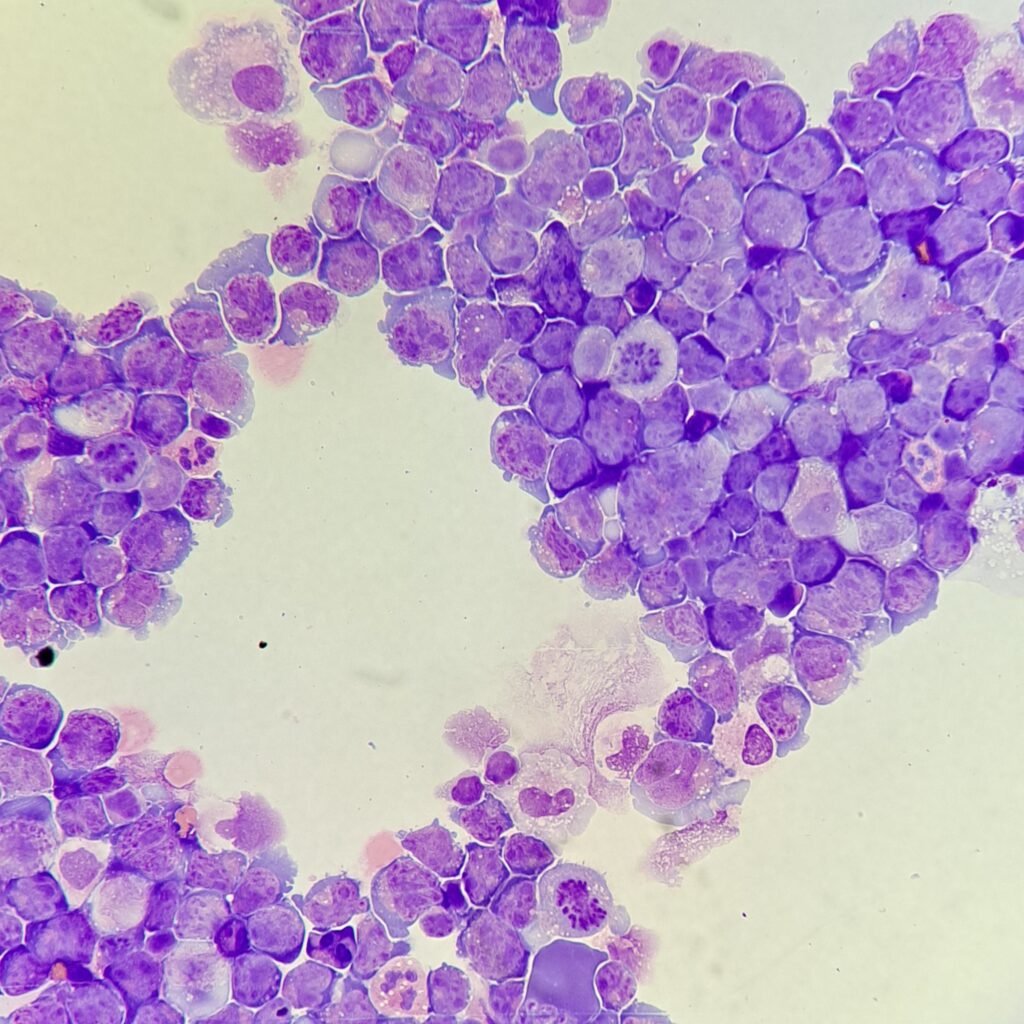
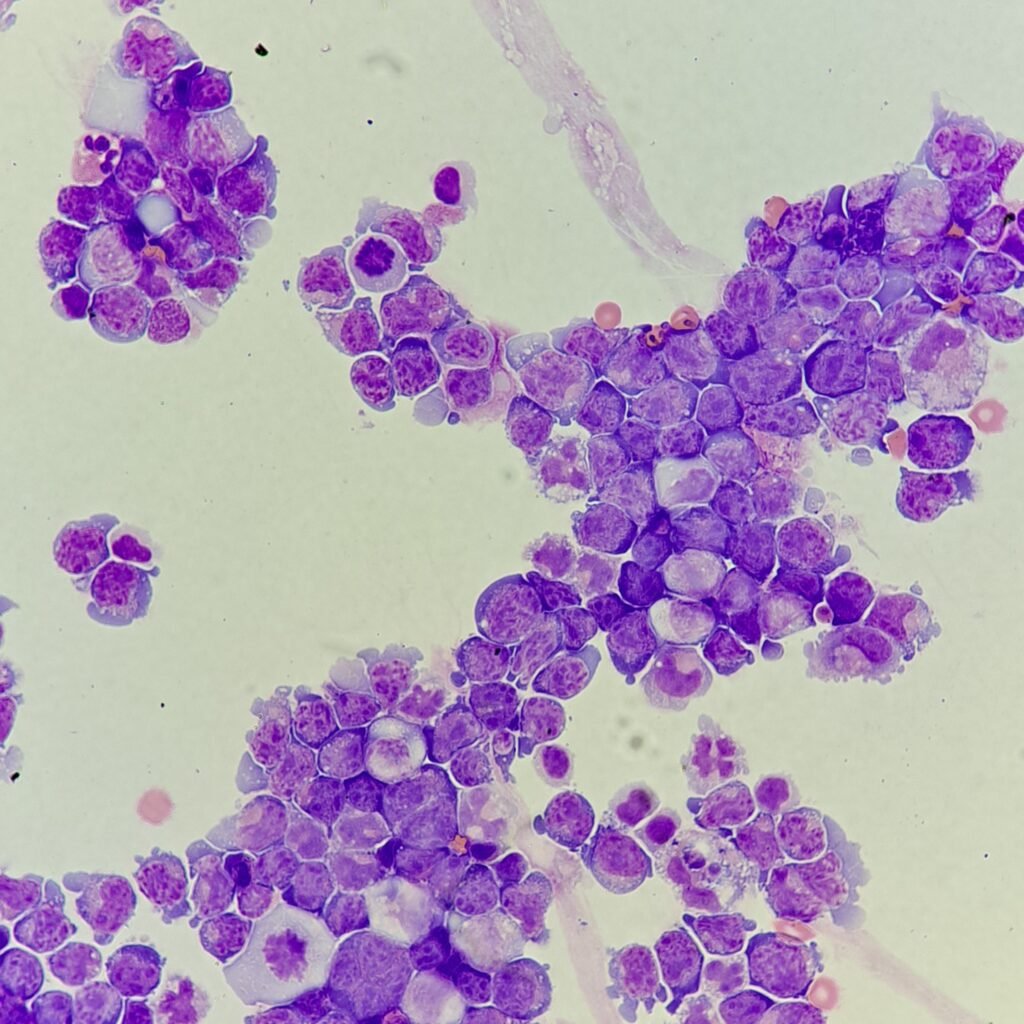
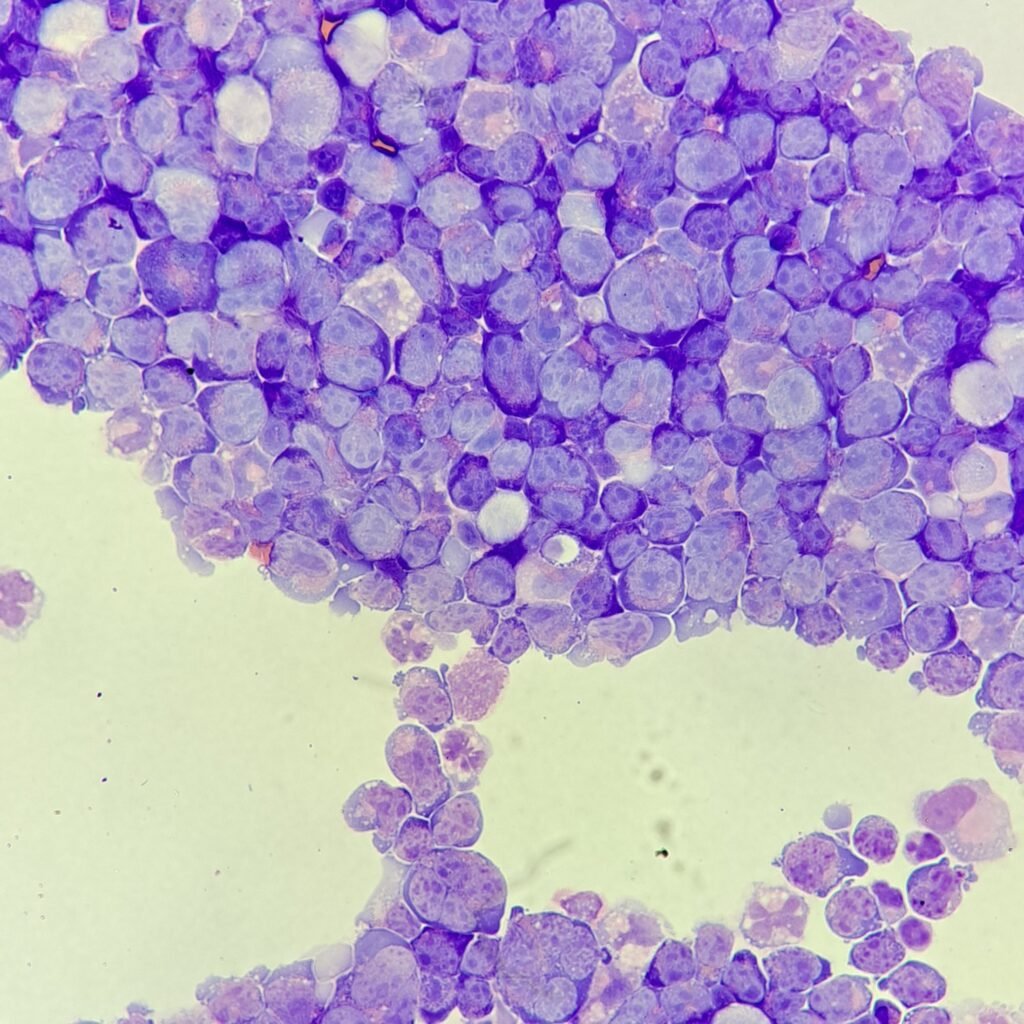
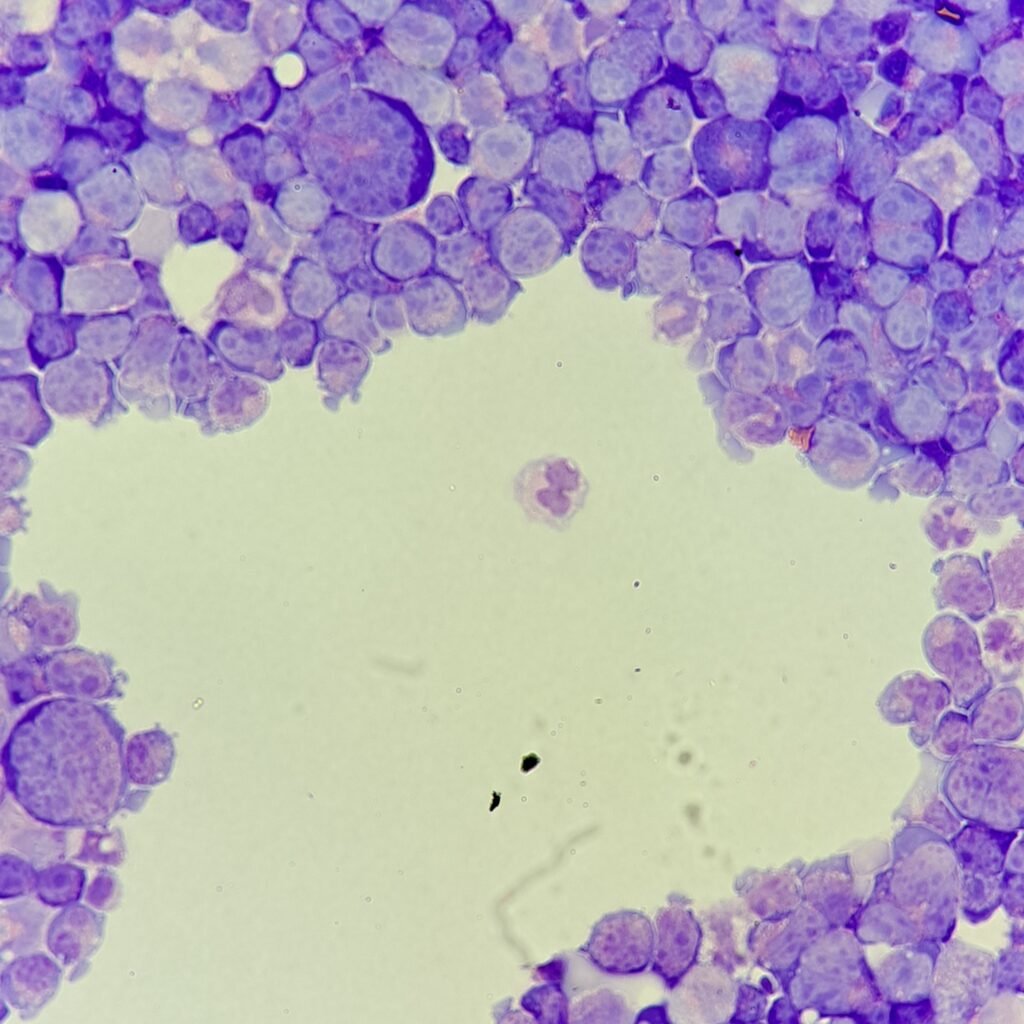
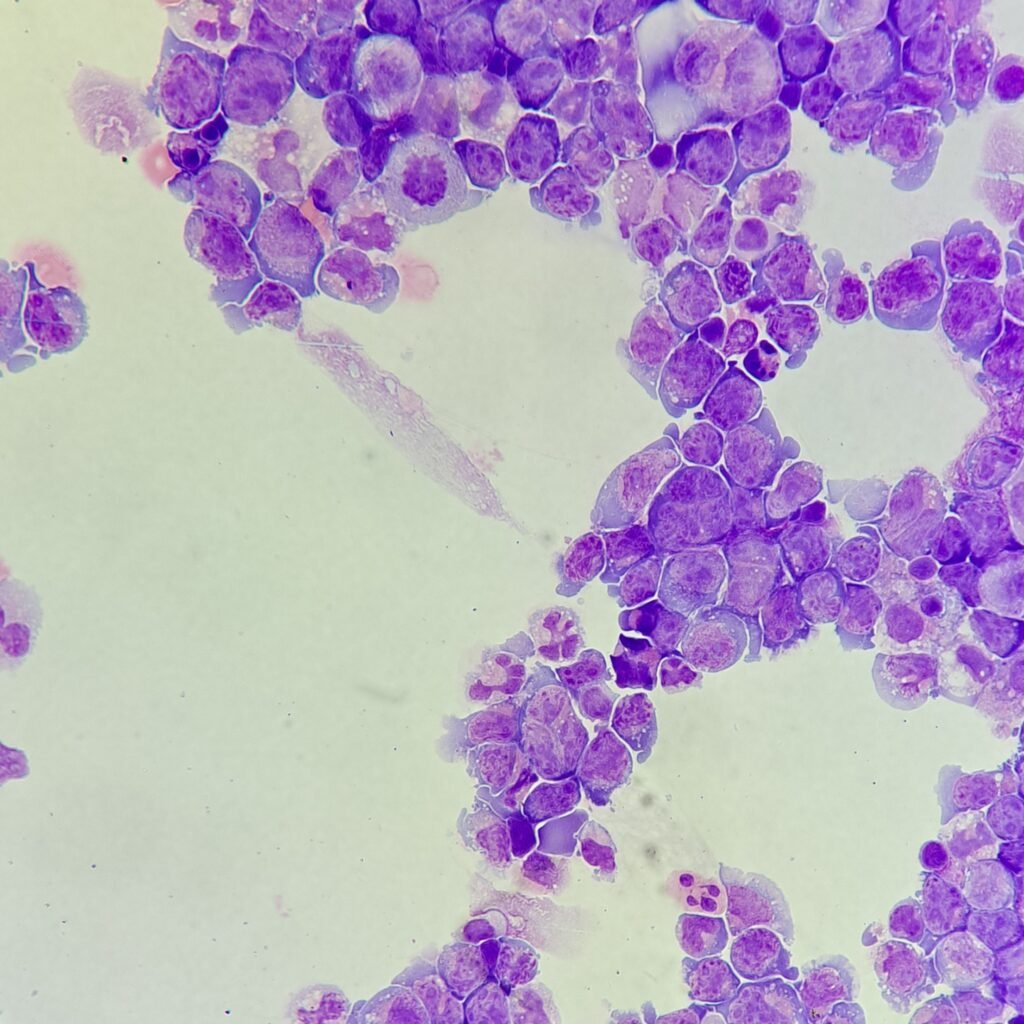

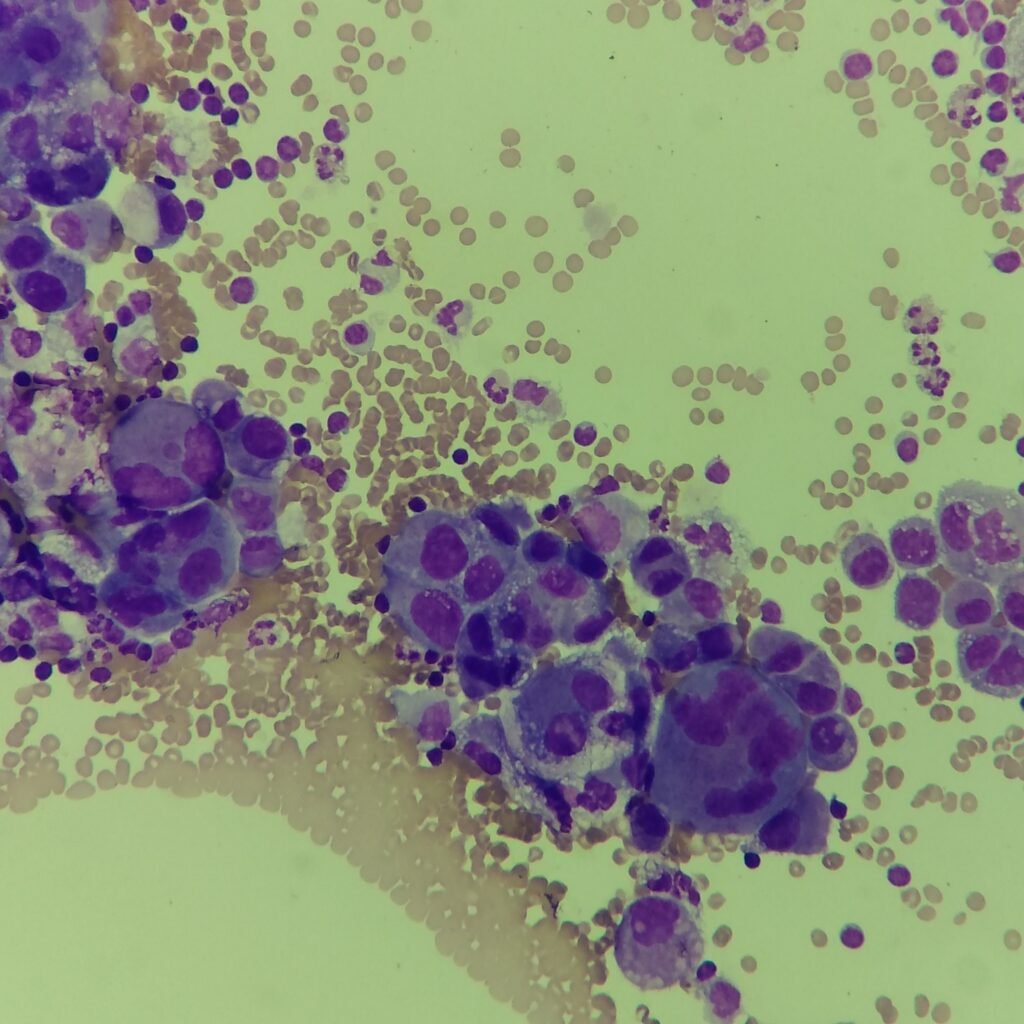
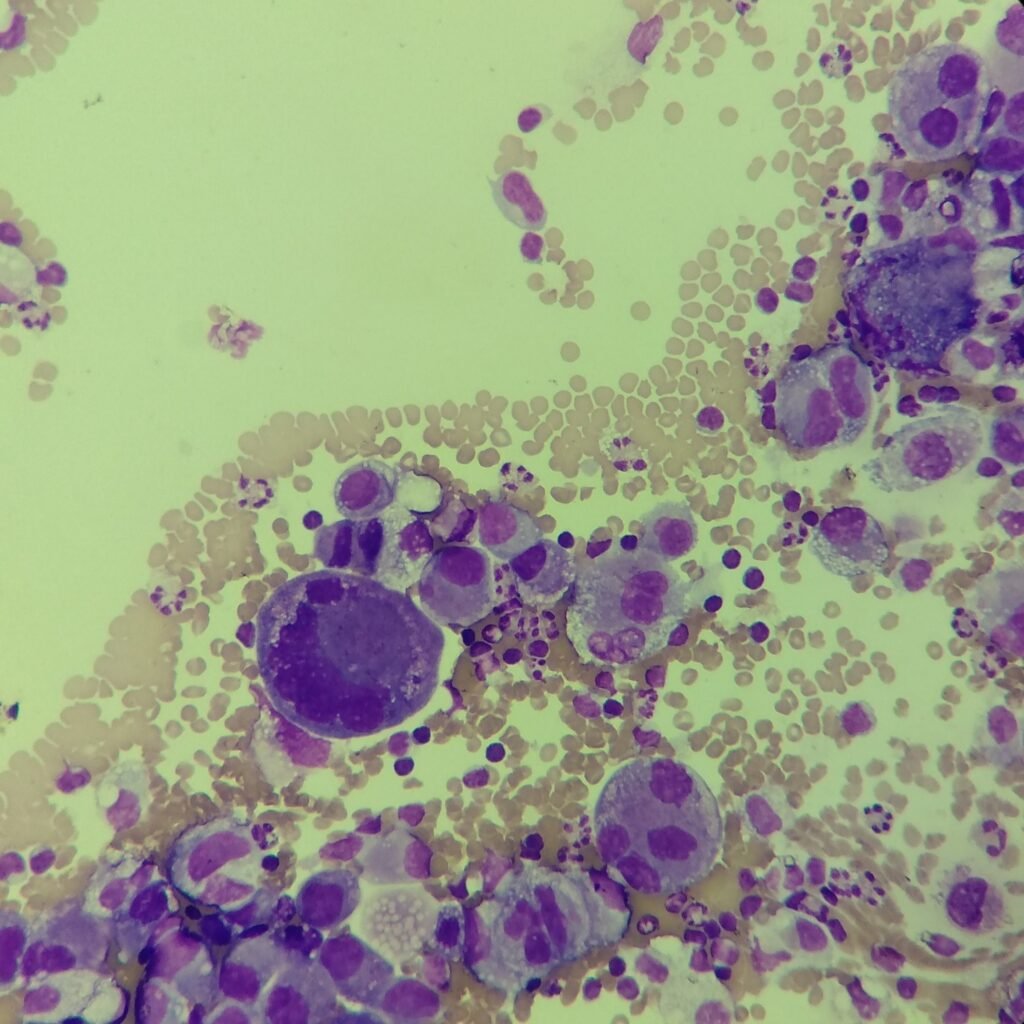
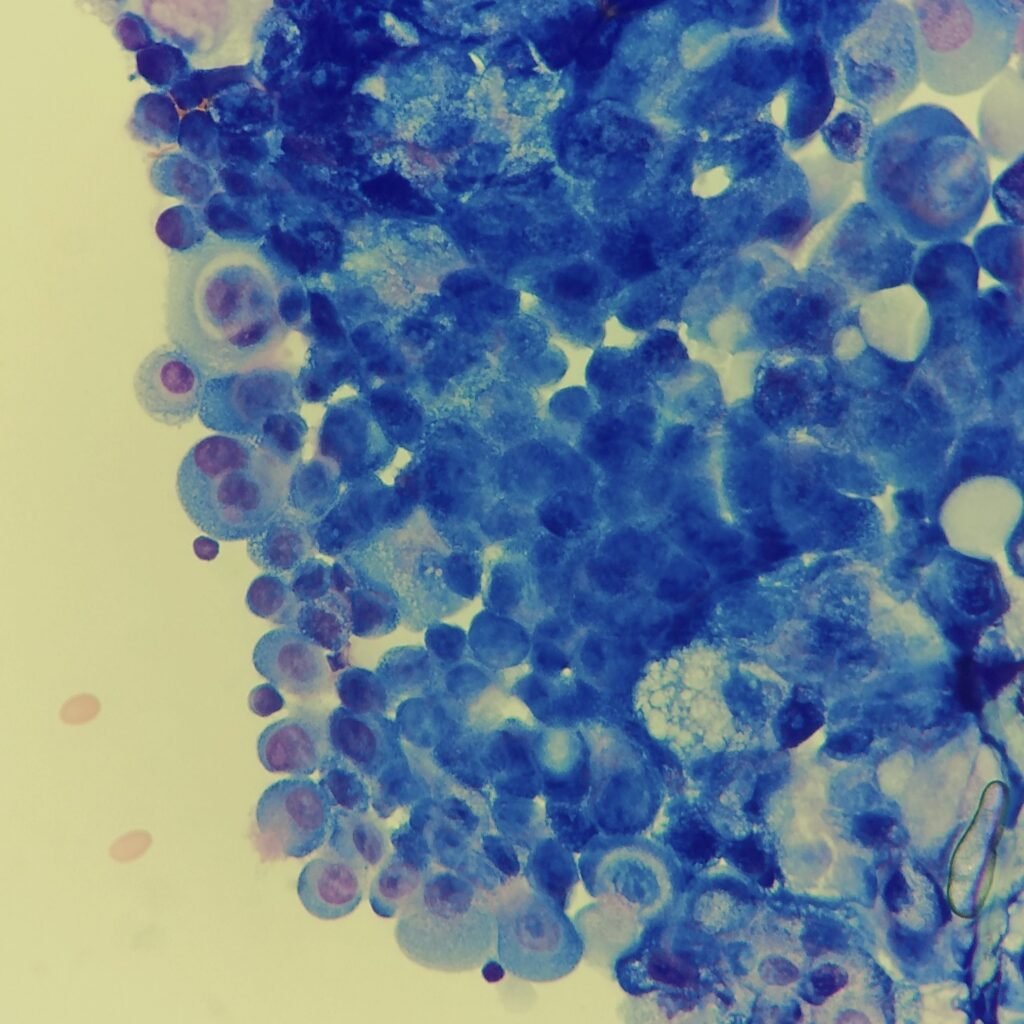
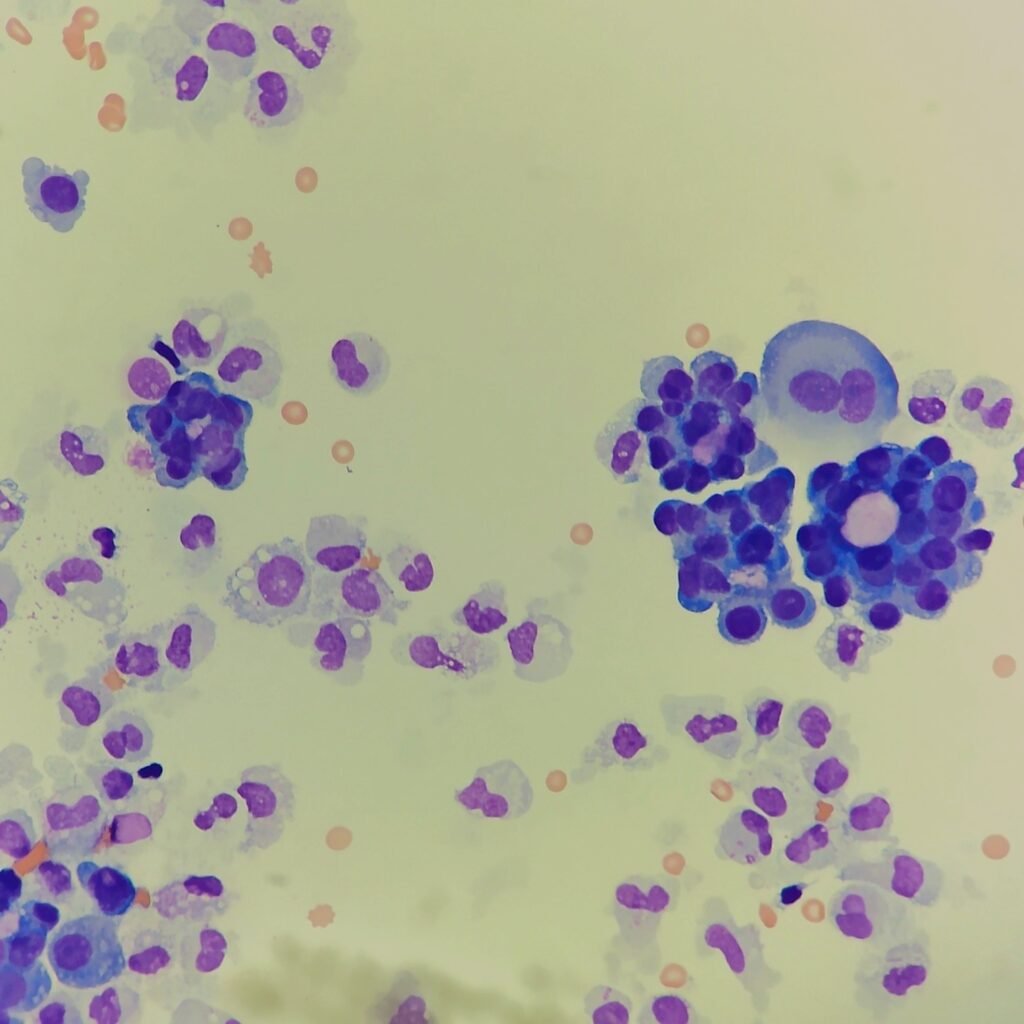
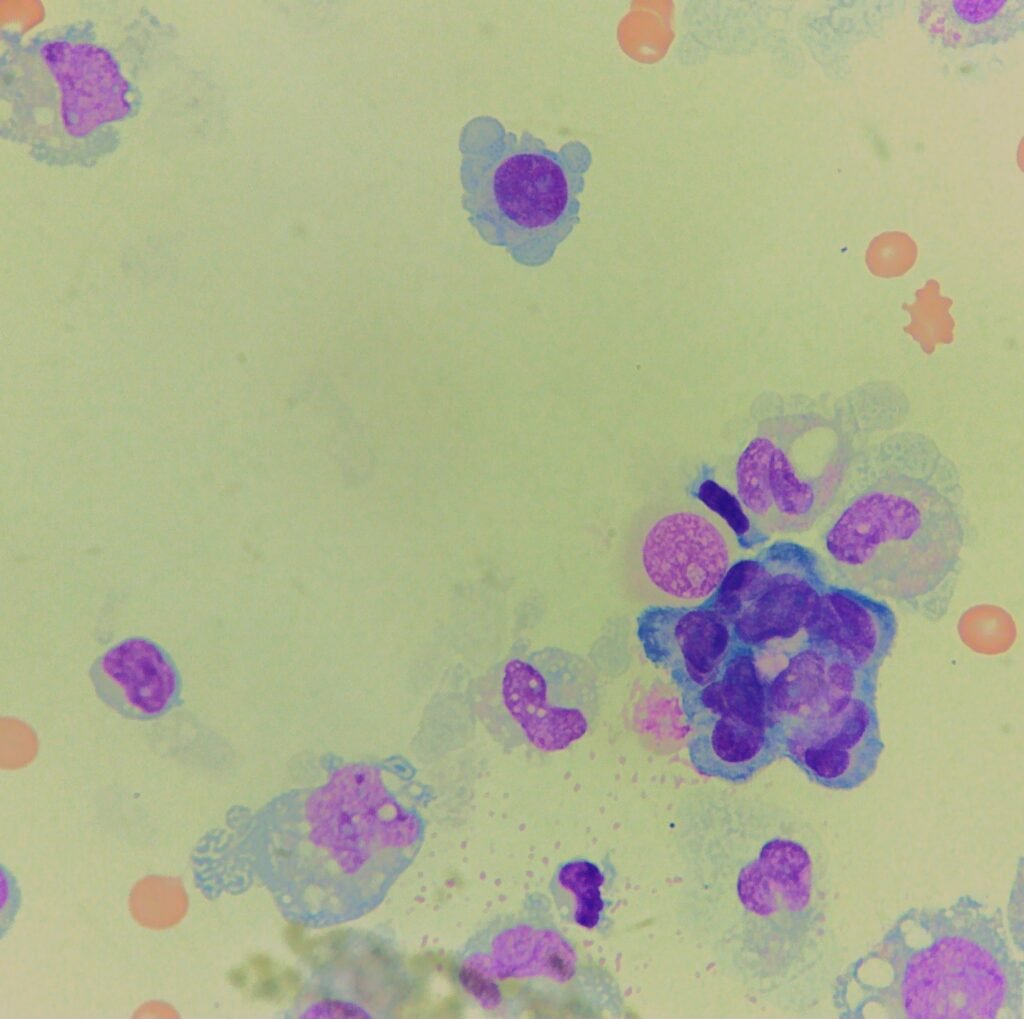
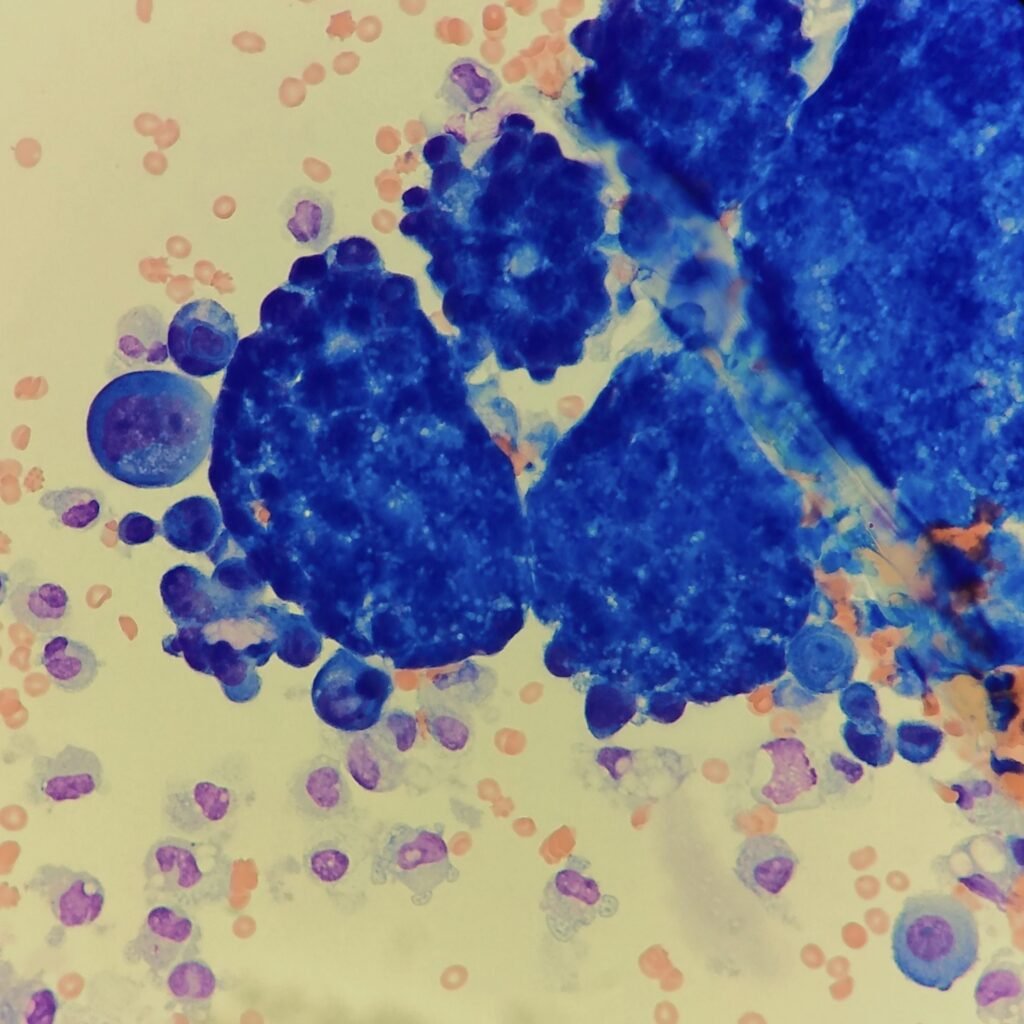
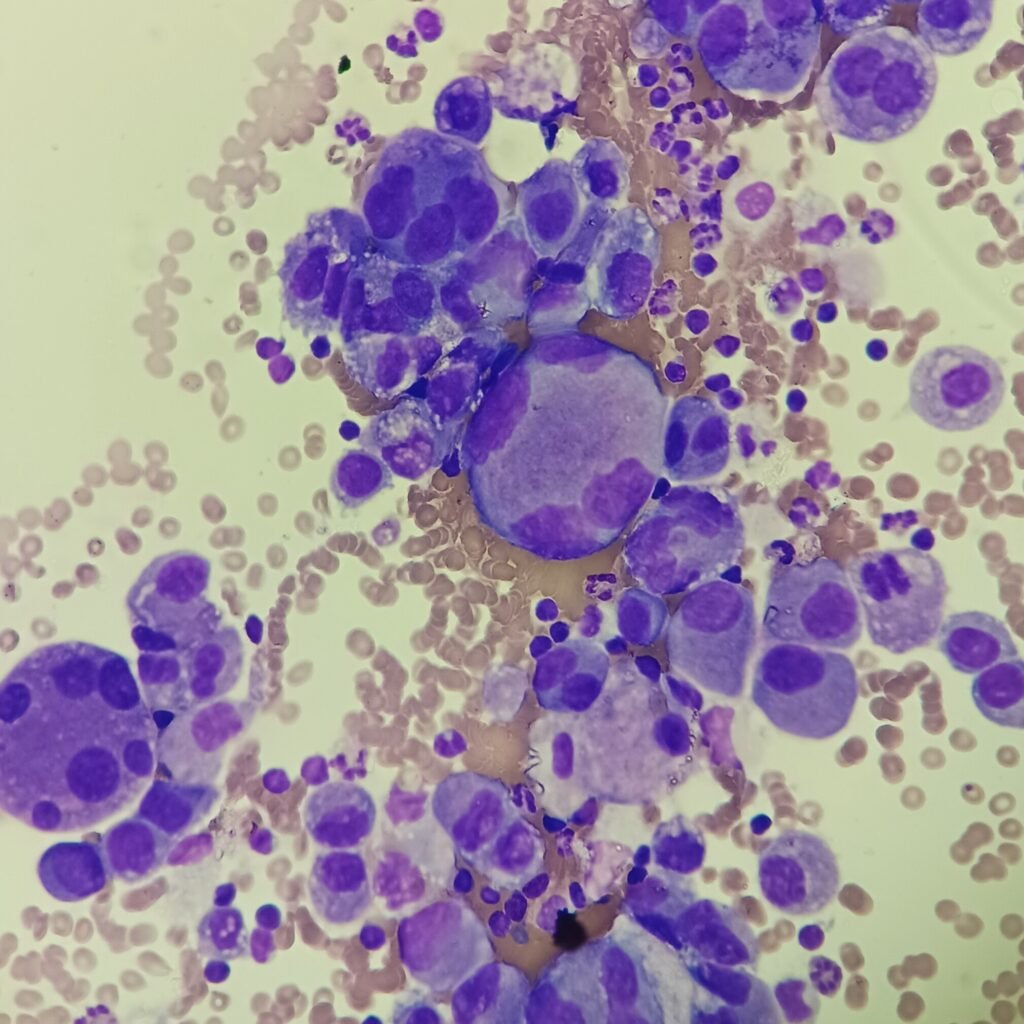
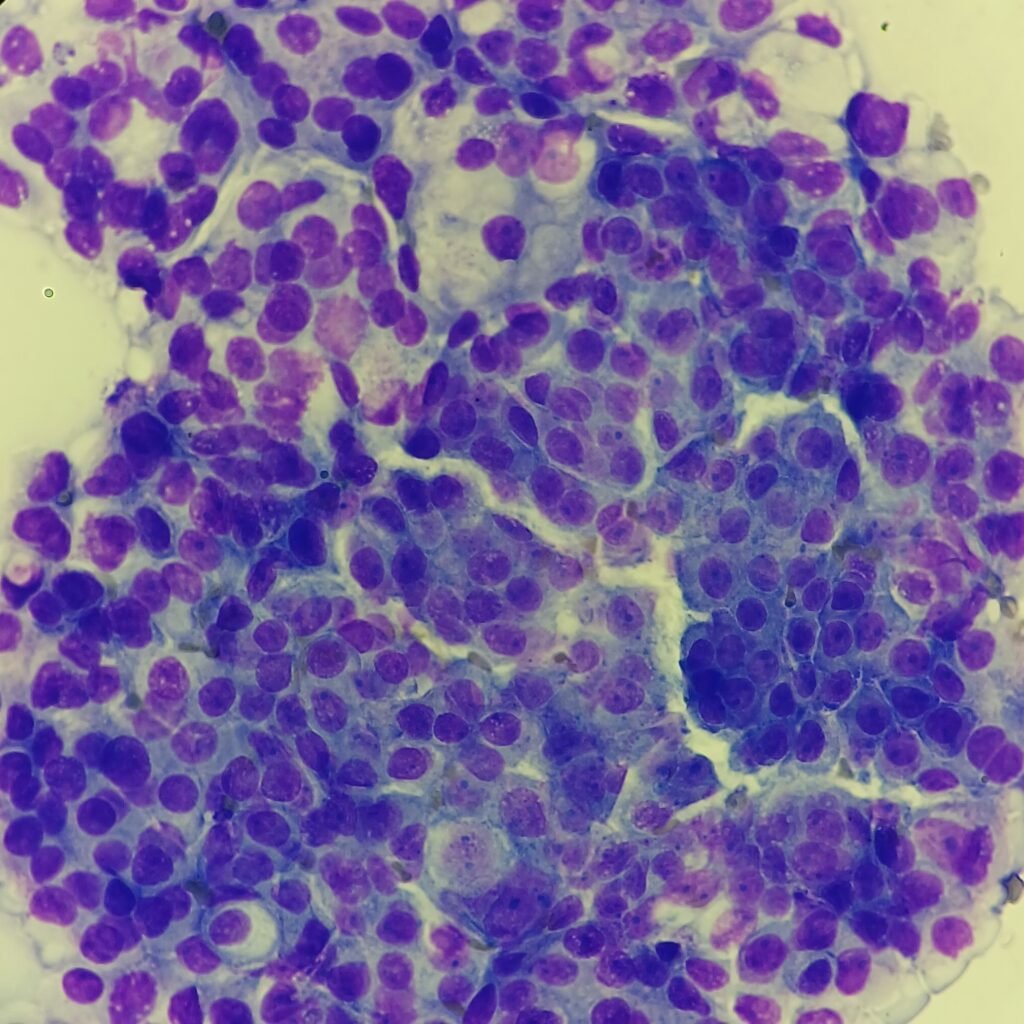
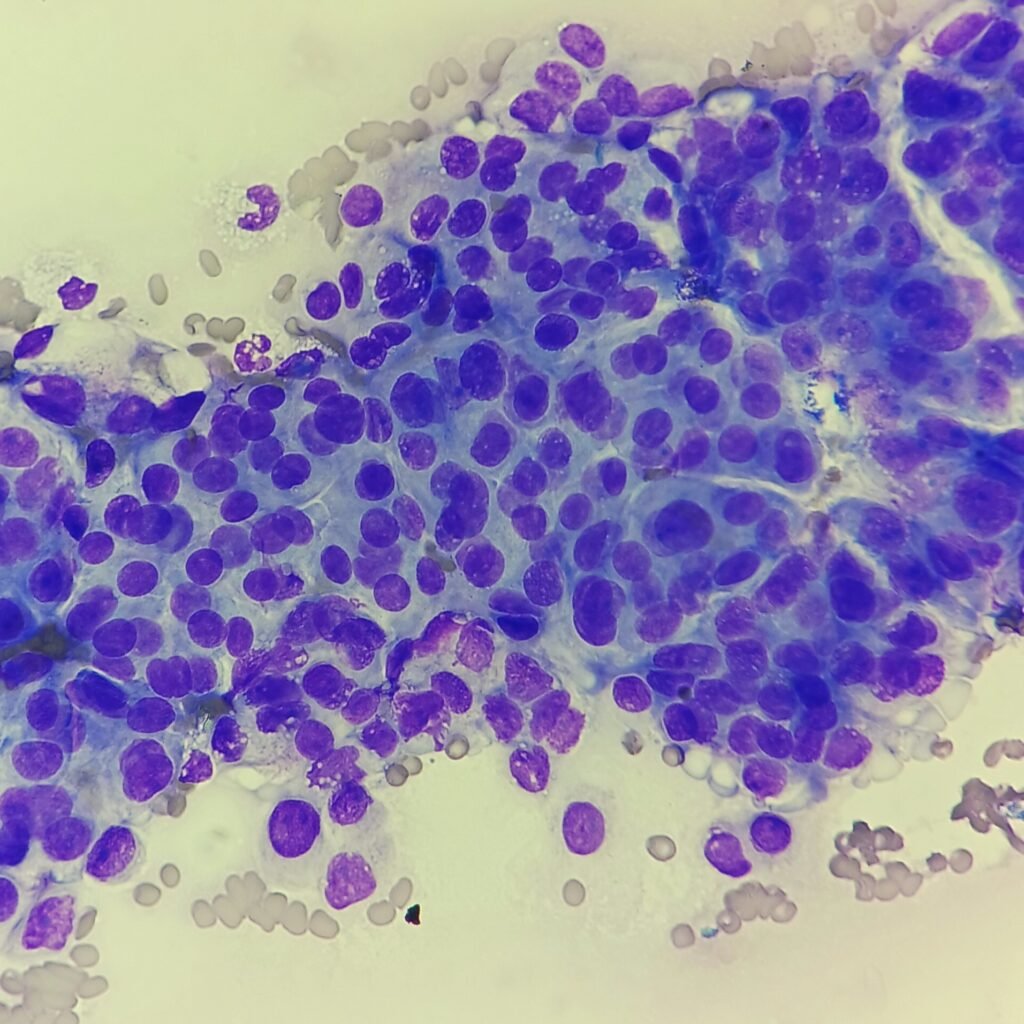
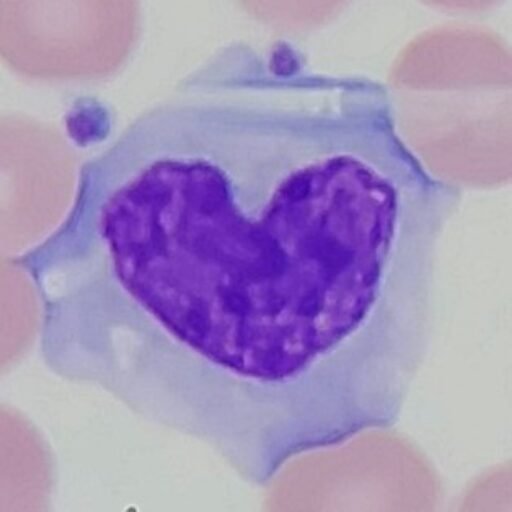
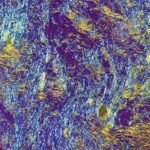
Leave a Reply